Dressing Well Needn’t Cost a Fortune
We all have to deal with finite resources in one way or another, but here at the Gentleman’s Gazette, we believe you shouldn’t have to compromise your style just because you’re on a budget. So, how can you dress the way you want to dress when you don’t have a lot of money?
- Dressing Well Needn’t Cost a Fortune
- The Advantages of Budget Shopping
- Budget Shopping FAQ
- Access, Affordability, and Ability: The Three Concerns of Budget Shopping
- Raphael’s Story
- Tip #1: Know Your Measurements
- Tip #2: Know Your Needs
- Tip #3: Initially, Avoid Bespoke and Made-to-Measure Garments
- Tip #4: Know What Your Alterations Tailor Can Do
- Tip #5: Go Vintage
- Tip #6: Invest in Flexible, Versatile, Wardrobe-Extending Garments and Accessories
- Tip #7: Take Care of Your Existing Wardrobe
- Tip #8: Don’t Buy Cheap and Buy Twice
- Tip #9: Don’t Fall Prey to Sales and Discounts
- Tip #10: Don’t Compromise on Fit
- Tip #11: Don’t Rely Exclusively on Salespersons or Sellers
- Tip #12: Do Your Research Before Budget Shopping
- Tip #13: Avoid Outlets When Budget Shopping
- Tip #14: Stay in Touch with Trusted and Valued Retailers
- Tip #15: Stick to Your Budget
- Conclusion
In our brand recommendations, we always strive to provide lists of quality manufacturers at various price points, but what if you are in a situation, such as being in school, starting a new career, or simply not currently earning sufficient income, in which even modest prices are out of your league? This guide is certainly for you!
“Never use the word ‘cheap.’ Today everybody can look chic in inexpensive clothes (the rich buy them too). There is good clothing design on every level today.”
Karl Lagerfeld
While good quality always has its price, the Gentleman’s Gazette is dedicated to helping men at every income level learn how to enjoy and participate in the Classic Style, no matter what is in your wallet. This guide will, therefore, take all of the mystery out of Budget Shopping with straightforward, helpful tips so that you get the most bang for your hard-earned bucks.
The Advantages of Budget Shopping
Budget Shopping has Many Positive Benefits!
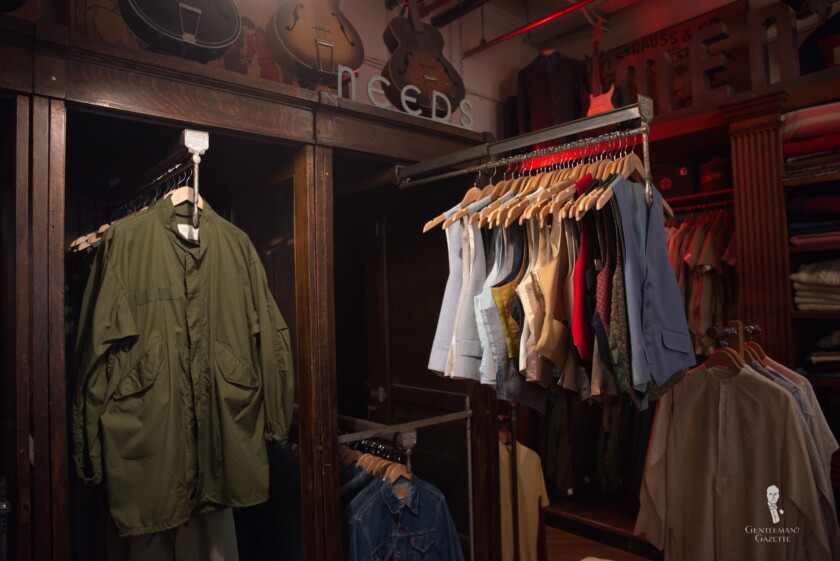
Believe it or not, there are actually a number of advantages to building a wardrobe on a limited budget.

Emphasis on Priorities
Because you have more limited resources, you will have to prioritize what items you really need to build out a versatile, stylish wardrobe. Learning how to determine your actual needs, as well as what constitutes genuine value, are useful skills that will serve you well throughout your menswear journey.
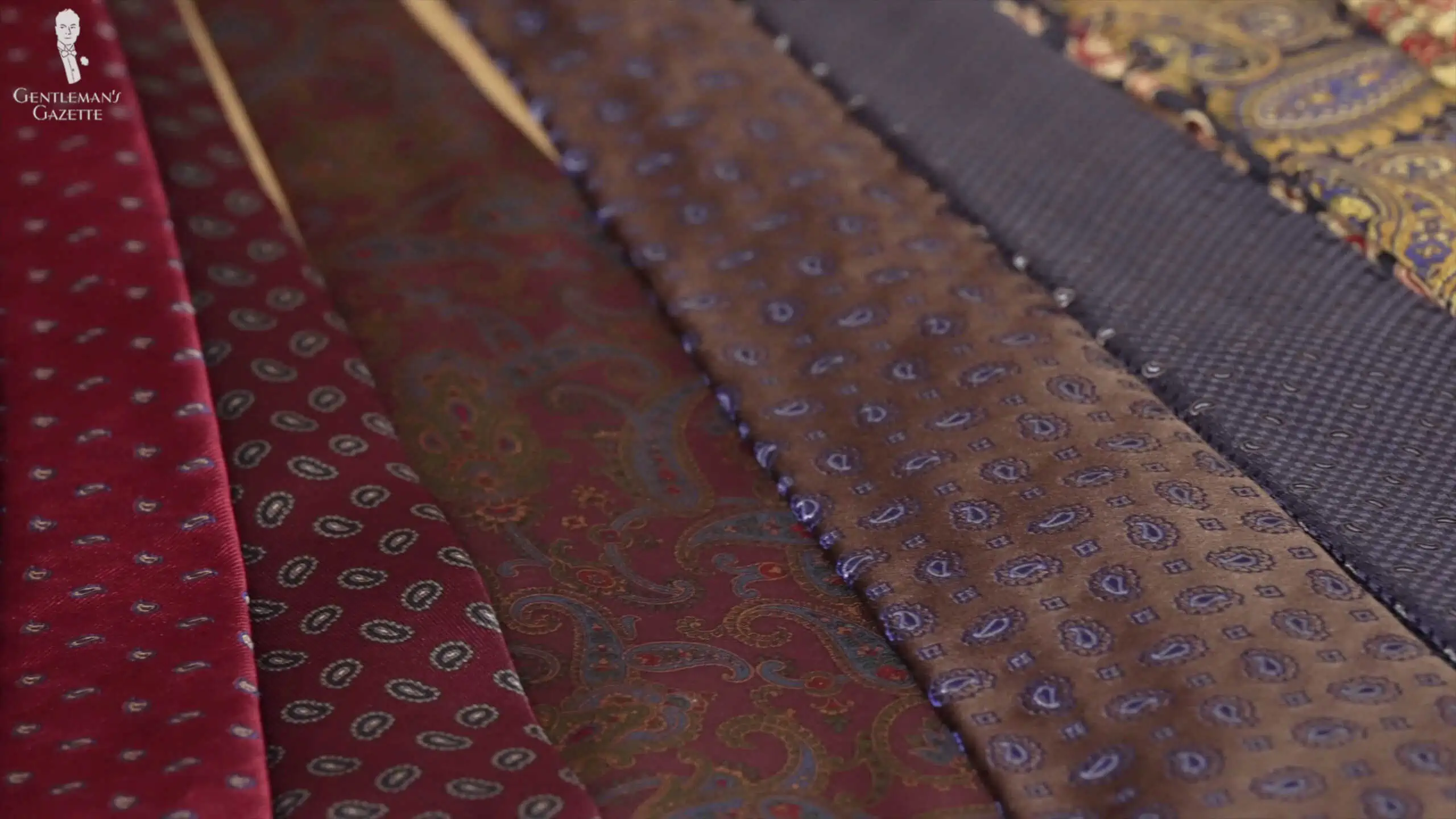
Quality over Quantity
As part of determining your priorities, you will necessarily have to reject most clothing items that do not fulfill your actual needs. As a result, you will not be burdened with superfluous, one-off items cluttering up your closet.
It is very likely that, in working to find a single, ideal navy blazer, you will have made a better purchase than a more well-heeled person who buys several subpar blazers.

The Thrill of the Hunt
Perhaps this is only true for us, but we have the feeling that if you love menswear, there is a particular joy that comes with having found a genuinely quality garment or accessory and acquiring it for an exceptionally good price. This treasure-hunter mentality certainly makes it easier for us to endure the hard work that goes into budget shopping.
Budget Shopping FAQ
What does “budget shopping” mean?
Technically, budget shopping refers only to buying clothing with a set budget in mind, and that budget could be small or large. Practically speaking, budget shopping usually refers to budgeting a particular amount of money to spend on clothing so that it does not negatively impact one’s other finances.
Is there a difference between “cheap” and “budget?”
Yes, there is. “Cheap” refers to an item having a low price, regardless of its actual quality or utility. A cheap item could function well, but in most cases, cheap items are also poorly made, which is how they are able to have a low price. Budget items may be inexpensive, but they are not necessarily cheap in the sense of being poorly made. The low price could instead be justified by other circumstances, such as the item having been previously worn or no longer in keeping with the latest styles.
Are new clothes automatically better than used clothes?
No, they are not. Many contemporary retail clothes, including expensive examples, are made according to substandard production methods to save time and money. Clothing made according to standards in place many years ago, conversely, was often, but not always, made to a higher standard, as prior to the Fast Fashion boom, clothing had to be made to last. Therefore, many lightly-used or well-cared-for vintage items are of superior quality to contemporary clothing fresh out of the box.
How much should I spend on clothes as part of my budget?
Ultimately, only you have sufficient knowledge of your finances to determine how much you should spend on clothes. While staple clothing that covers your body is essential spending, most clothing items in particular styles, such as the Classic Style, should be considered discretionary spending. You should never overspend on discretionary clothing.
Can your clothes look expensive on a budget?
Yes, they can. With the tips found in this guide, you will learn exactly how to spend your money to acquire garments and accessories at reasonable prices that are still well-made and properly fitted and will therefore appear more expensive than they actually are.
How do I start building a Classic menswear collection from scratch on a budget?
When assembling a Classic menswear wardrobe, you must begin by sourcing essential, fundamental items like dress shirts, ties, suits, and socks. We have several videos that cover the basics that should appear in any Classic collection, and the tips in this guide will help you learn how to purchase those items at a reasonable price point.
How easy is it to build a Classic menswear wardrobe on a budget?
With the willingness to put in a little legwork and the insights contained in this guide, it is a very simple, straightforward endeavor to start building a Classic wardrobe on a budget. In fact, because there is less demand for Classic items than trendy items, you may find it easier to assemble a Classic wardrobe on a budget than you would a trendy wardrobe.
Is shopping online always cheaper than shopping in-store?
No, it is not. While online shopping does offer some intrinsic benefits, it is not guaranteed to be less expensive than brick-and-mortar stores, as we discuss in our video on the direct-to-consumer sales model. Oftentimes, locating the very best deals will require a combination of in-person and online shopping.
Is budget shopping a waste of money?
No, it is not. Buying poorly made, cheap items is a waste of money because the inferior quality will often necessitate repeat buys or superfluous purchases. Budget items, however, represent a good or fair level of quality compared to their cost and, as such, often represent excellent investments.
Are budget clothes inherently cheap or dirty?
No, they are not. Reliable retailers will carefully sanitize and clean any garments before putting them up for sale. While there are occasional outliers, most second-hand clothes are very clean and well-maintained.
Access, Affordability, and Ability: The Three Concerns of Budget Shopping
Definition of Terms
Budget shopping exists at the intersection of three basic principles:
Access: The ability to acquire goods.
Affordability: Recourse to the funds necessary to acquire goods.
Ability: Capability to research and negotiate for goods.
Access: How You Get to Budget Shopping Resources

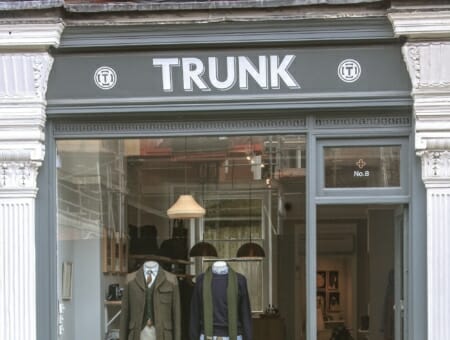
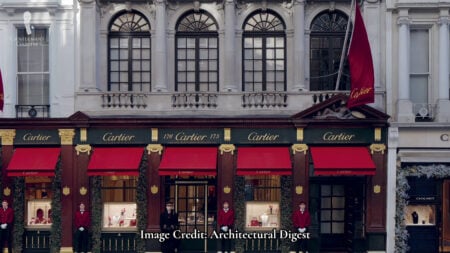
Access is the most simple principle to understand. It indicates whether you have access to the tools or institutions necessary to acquire clothing on a budget.
For instance, if you live in a large city, you will likely have access to a wide variety of menswear stores, such as a vintage shop, thrift store, or consignment store, where you can source quality items at reduced prices.
If your local community cannot sustain such businesses, it will, obviously, be more difficult for you to access those resources. Thankfully, online shopping has made it considerably easier for gentlemen all across the globe to have improved access to menswear vendors.
Learn the basics of online shopping!
Affordability: What You Can Pay When Budget Shopping
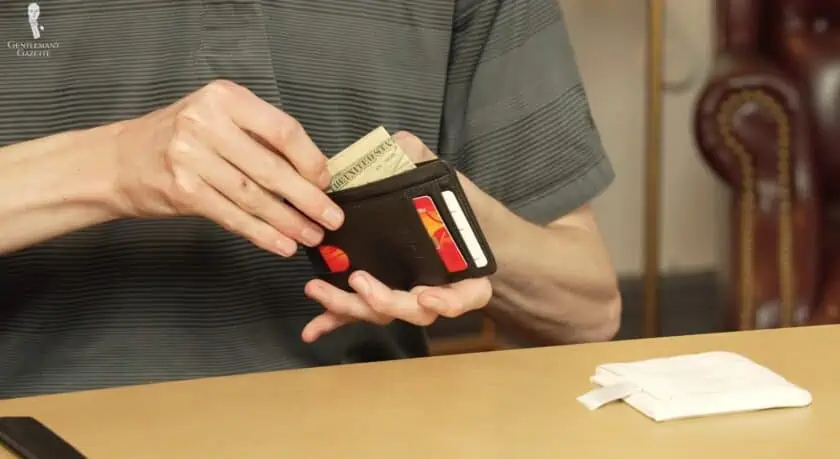
Affordability refers to the differential between the cost of what you want to buy and the funds to which you have access. If you have a great deal of expendable money on hand, you can spend it more readily, although we’ve found that it never hurts to save money, no matter how flush you are.
“Money stands for all kinds of things—its purchasing quality isn’t limited to diamonds and motor-cars”
From The House of Mirth by Edith Wharton
If what you wish to buy costs more than you can afford, you have two options: to save your money until you can afford it or to endeavor to acquire the item, or a comparable item, at a lower cost. Budget shopping is the central purview of the latter.
Ability: How Well You Can Budget Shop
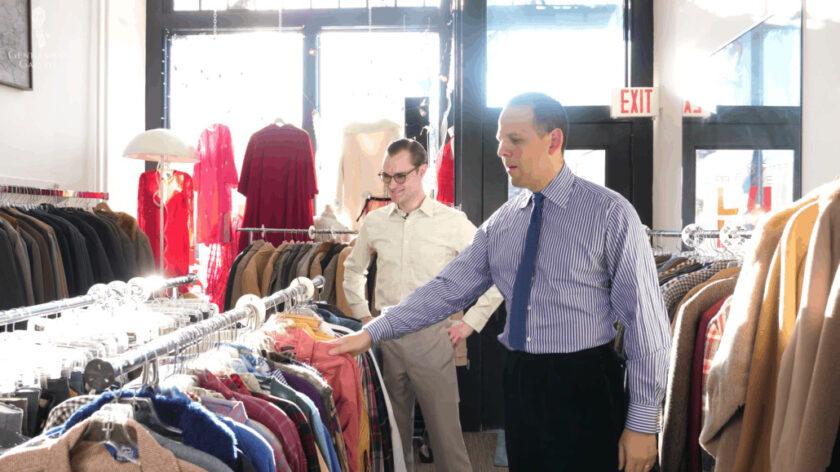
Ability refers to ways in which you can endeavor to acquire goods that you desire at prices that you can afford. It includes actions like researching for the best possible deals, scouting for bargains, searching the clearance aisle, cutting coupons, finding promotions, traveling to multiple stores, or learning to haggle.
“I say money has no value, it’s just the way you spend it”
William Faulkner
Ability is sometimes summed up with the phrase “to be money-poor but time-rich.” This concept essentially means that, while you may not have much to spend, you do have the time needed to learn how to spend that money wisely and to offset your lack of funds.
Put another way, your ability allows you to augment your affordability, and you are willing to spend additional time and intellectual resources to make your limited financial resources go further.
Raphael’s Story
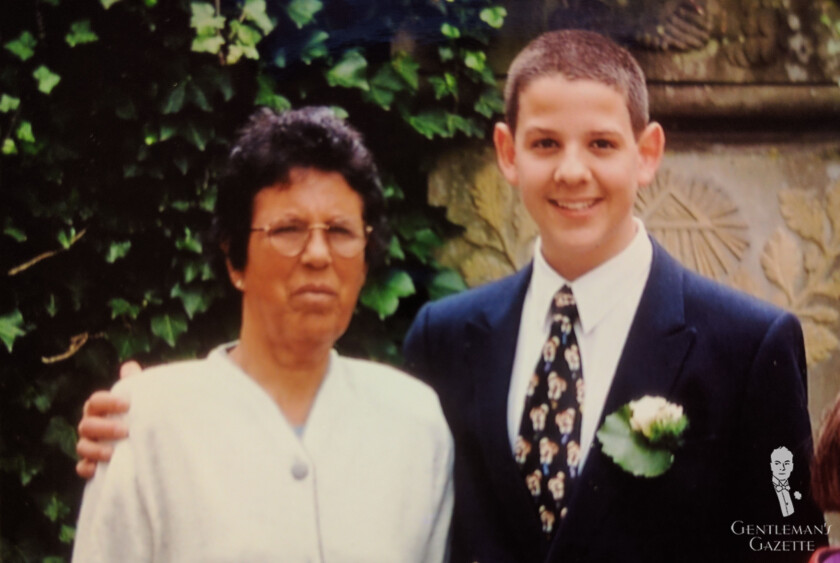
Many people are surprised to learn that Raphael was not born into wealth. In fact, at one point, he was flat broke. As a result, he learned from a young age how to leverage access, affordability, and ability to his benefit. The following is Raphael’s personal account of how he learned to employ budget shopping wisely.
“I grew up in a small town in southern Germany with 3,000 people. At the age of 15, I began to read about Classic Men’s style. I would meet with people and craftsmen, online and in person, and made sure to visit stores whenever I did have access. I researched my travel routes before so that I could meet people along the way.
Later on, I moved to Munich and then Hamburg, where I went to law school. All of a sudden, I was living in cities with tailors, expensive haberdashers, and plenty of options to choose from … if it wasn’t for the money. So I began by creating a list of items a complete wardrobe should have and started looking on eBay and most importantly, local vintage stores for items to add to my closet. If something didn’t turn out, or if I found a better quality item along the way, I sold the old things and bought new ones.
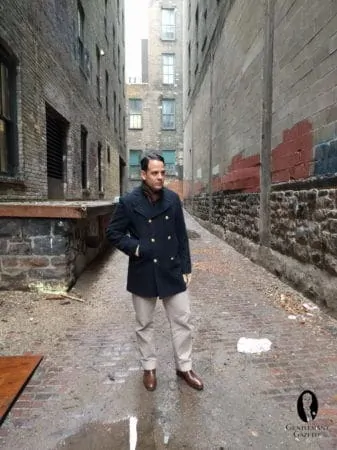
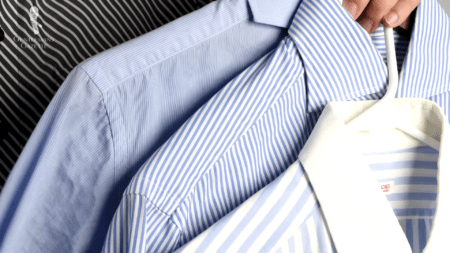
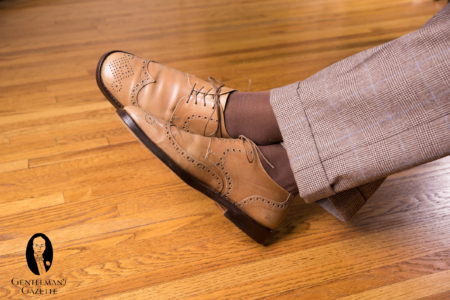
My shirt wardrobe was completely revamped twice in this way, including the blue and white striped Siniscalchi bespoke shirt that I picked up from a retiring businessman. I also scoured local vintage and secondhand stores for my beloved Navy surplus peacoat. Many of the things I bought years ago on eBay or at a vintage store still play an active role in my wardrobe today, like a pair of tan derbies that I bought as new-old-stock in 2003.
As you can see, I know exactly what it is like to have a limited budget or to live in an area without any availability. All of the hints and tips I provide here are based on my personal experience, and they worked very well for me. I am sure that they will also work for you.”
Tip #1: Know Your Measurements
Eliminate Waste by Knowing your Size and Fit
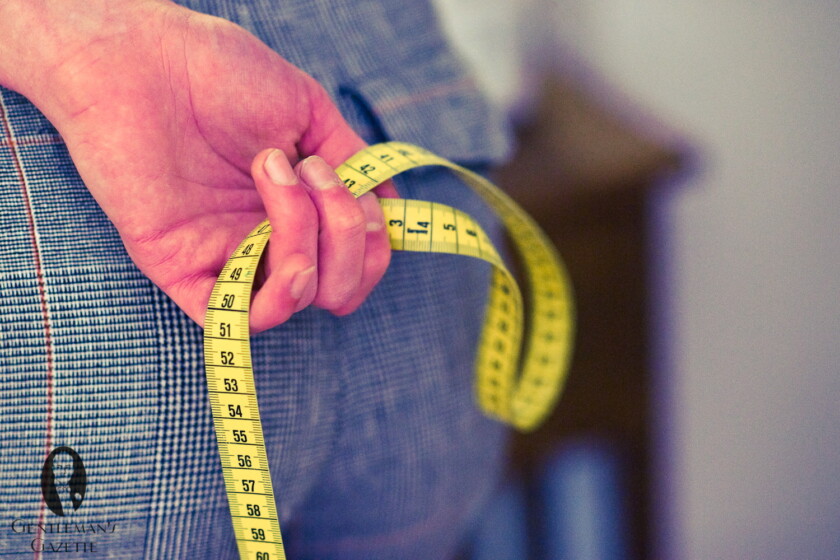
Fit is the most important thing when it comes to clothes. Since clothing sizing is highly variable and vintage clothes often have no tags to indicate size, measurements are the best way to determine if a certain garment will fit you.
That means you need to know your body measurements, plain and simple, and we don’t mean just your jeans size. Ideally, sizing would be universal and reliable, but you have likely learned from your own experience that they are not consistent, and therefore you cannot rely on stated sizes alone to find better-fitting clothing.
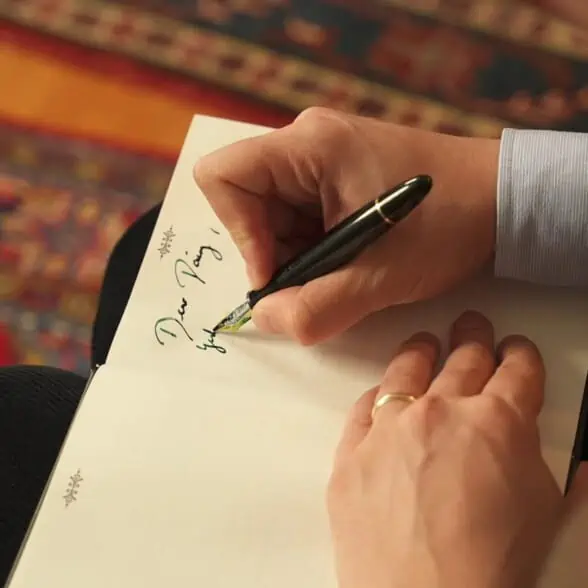
Keep a record of your personal
Measurements
Rather than having to measure yourself quickly every time you want to make a purchase, keep thorough and updated records of your measurements in both inches and centimeters. Write them down in an accessible location, or memorize them for convenience. This will ensure that you promptly have access to all of the information that you need when making a purchase.
How to Correctly Measure Yourself
Using the guidelines in the above video on Buying Suits Online, carefully determine all of the measurements that are typically used in menswear, including chest size, waist size, inseam, and sleeve length.
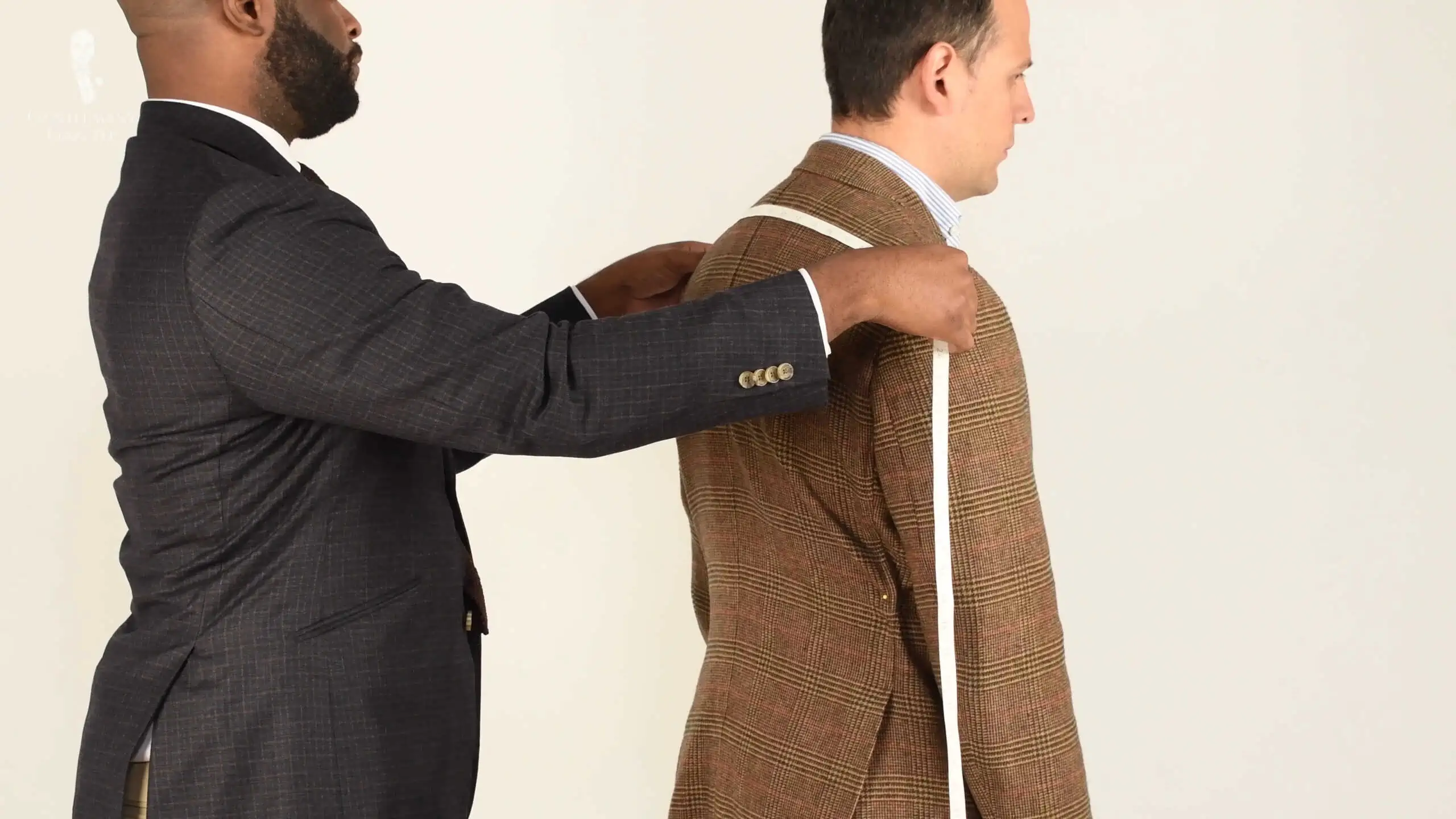
Quick Tip!
Ask a friend for help when getting your measurements, so that you can stand as naturally as possible during the process. Many alterations tailor will also professionally take your measurements for free.
Do not forget to retake your measurements every few months to account for any changes, especially if you lose or gain a considerable amount of weight.
Interpreting Measurements from Online Sellers and Retailers
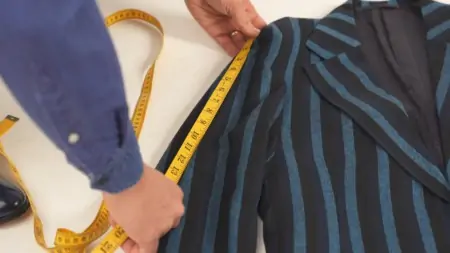
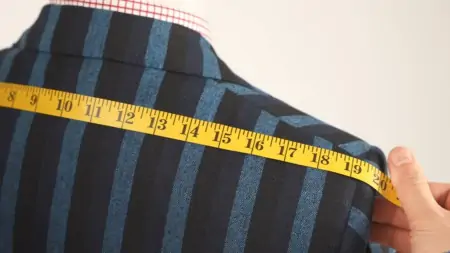
If you buy from online retailers like eBay or Etsy, you must determine how the seller has made his or her measurements. Many sellers take their measurements in different ways: a measurement taken on a model will be different from a measurement taken from a flat garment, and some sellers only give the length of the inseam or the outseam but do not specify which it is.
Therefore, you will need to learn to interpret the information they offer, and if you cannot be sure, do not hesitate to contact the seller for more information.
You can also receive guidance by measuring the dimensions, usually flat, of a garment that already fits you well. You can use these measurements as a reference point for future shopping.
Account for Asymmetry When Taking Your Measurements
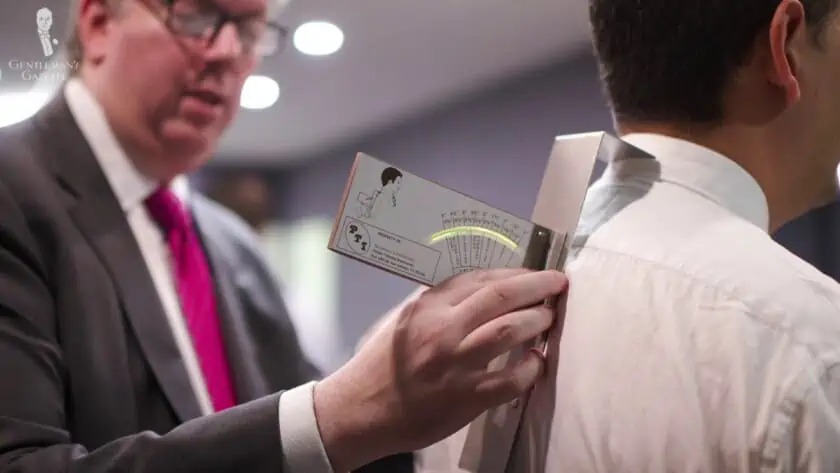
The next step is to identify asymmetry. In the beginning, you may not notice the asymmetry of your body, but it is there. You can also rely on the advice of a trained tailor to identify asymmetry more quickly.
To figure out your body’s characteristics yourself, wear any off-the-rack garment because it will have been made symmetrically. Then, have someone take pictures of your body standing in a natural position from the front, back, and both sides. Observe the photographs and determine your body’s quirks and needs and how clothing needs to adapt accordingly.
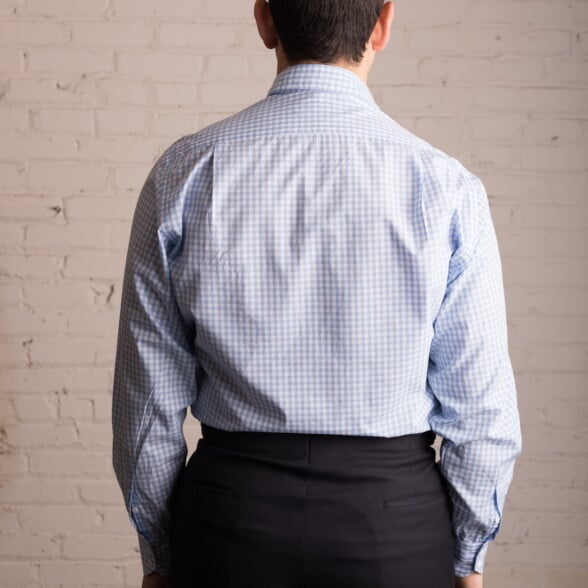
Raphael’s Asymmetries
As an example, Raphael’s right shoulder hangs about 1.5″ lower than his left one. This means his armhole has to be cut deeper, and he either needs a shoulder pad on the right or the cut of the shoulder has to be different. The sleeve also has to be set in differently.
Raphael also has a slightly rounded back, and one arm is half a centimeter (one-fifth of an inch) longer than the other, and his right leg is slightly bigger than his left one.
By being aware of these asymmetries, it is easier for Raphael to source clothes that fit him well.
Once you know your measurements, spotting well-fitting (usually vintage or slightly used) clothing online will be much easier.
Tip #2: Know Your Needs
Know Your Wardrobe, What It Has, and What It Lacks
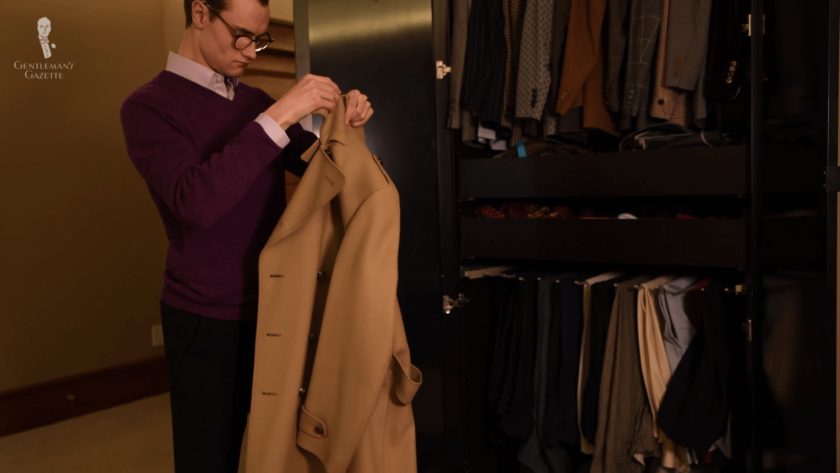
Every man who cares about dressing well should know exactly what is in his closet and what he needs to make it even better. Start by assessing your current wardrobe and identifying gaps for all seasons. Note pieces to replace, such as the navy blazer which never really fit you well.
Plan and Prioritize Your Sarotial Needs to Guide You When Budget Shopping
Take a minute and write down all the places you usually go to and what clothes you should be wearing ideally. Then, prioritize the gaps and replacement needs in terms of versatility and how much money you have to budget for each item. Prioritize the most versatile pieces, such as a navy suit, or wardrobe-extending pieces first, since they will give you the greatest benefit for the dollar.
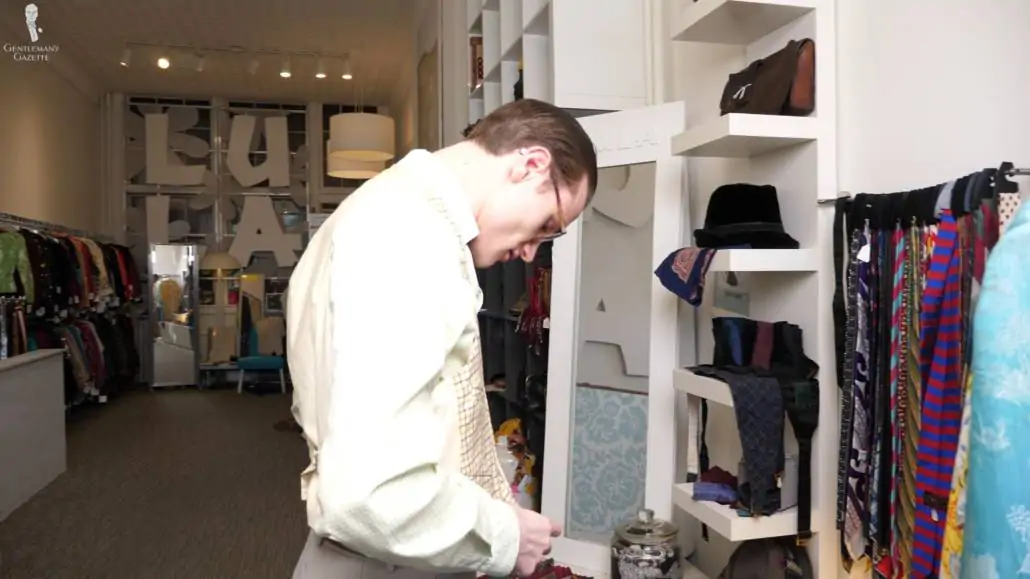
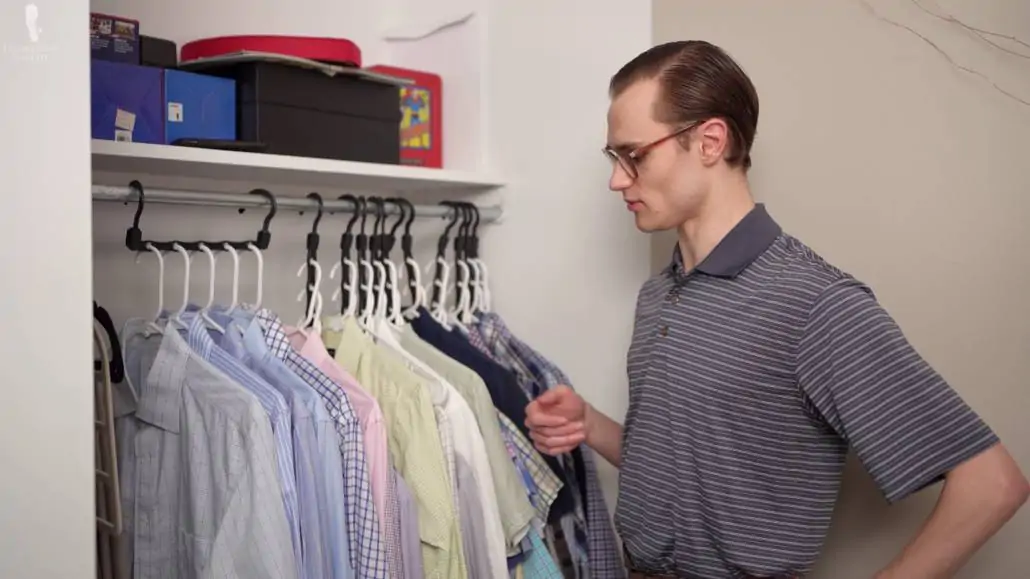
When you are on a budget, it’s hard to stick to a rigid purchase schedule because you may miss key opportunities as they arise. But, if you already have a clear idea of what you need, you can make better decisions in the moment. Do your best to only buy what is on your list, and you’ll be happier with the result in the long run.
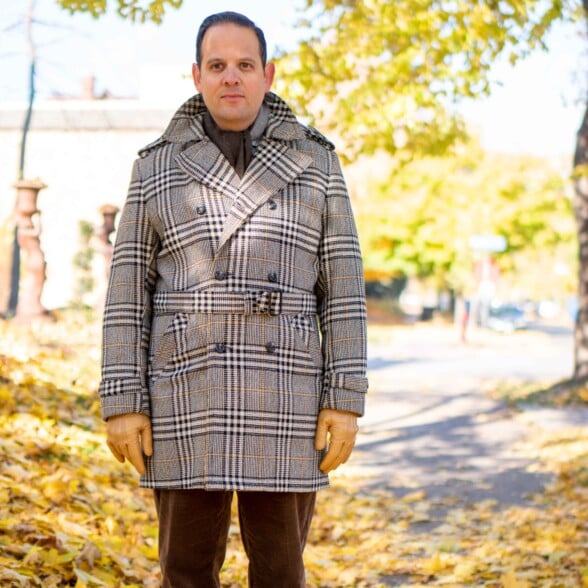
Do not restrict yourself
Seasonally
Once you have an idea of what is on your list, don’t restrict yourself to shopping seasonally. Some of the best finds Raphael has made were of items on his list that were out of season. For example, he bought an overcoat for 5 euros in Dresden in July when it was 90 degrees out and stored it away until the cold weather came.
Tip #3: Initially, Avoid Bespoke and Made-to-Measure Garments
Invest in Quality Off-the-Rack and Vintage Attire Before Buying Custom
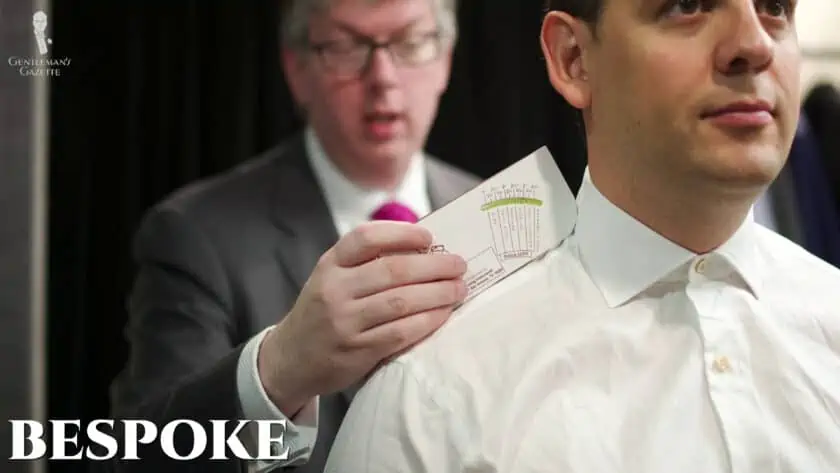
It may sound obvious, but when you are first getting involved with Classic Menswear, avoid bespoke and MTM suits, even if you find a really inexpensive tailor. Once you’re into fashion, it’s only natural to want to add a nice suit, but it’s worth holding off for a while.
When we say bespoke, we mean true bespoke with fittings and a fair amount of handwork and canvas interlining. No matter where you make it in the world, you will hardly ever get a product for under $1,000 that is of the best quality (including cloth), and when you start and need an entire wardrobe, you will likely not be able to afford it.
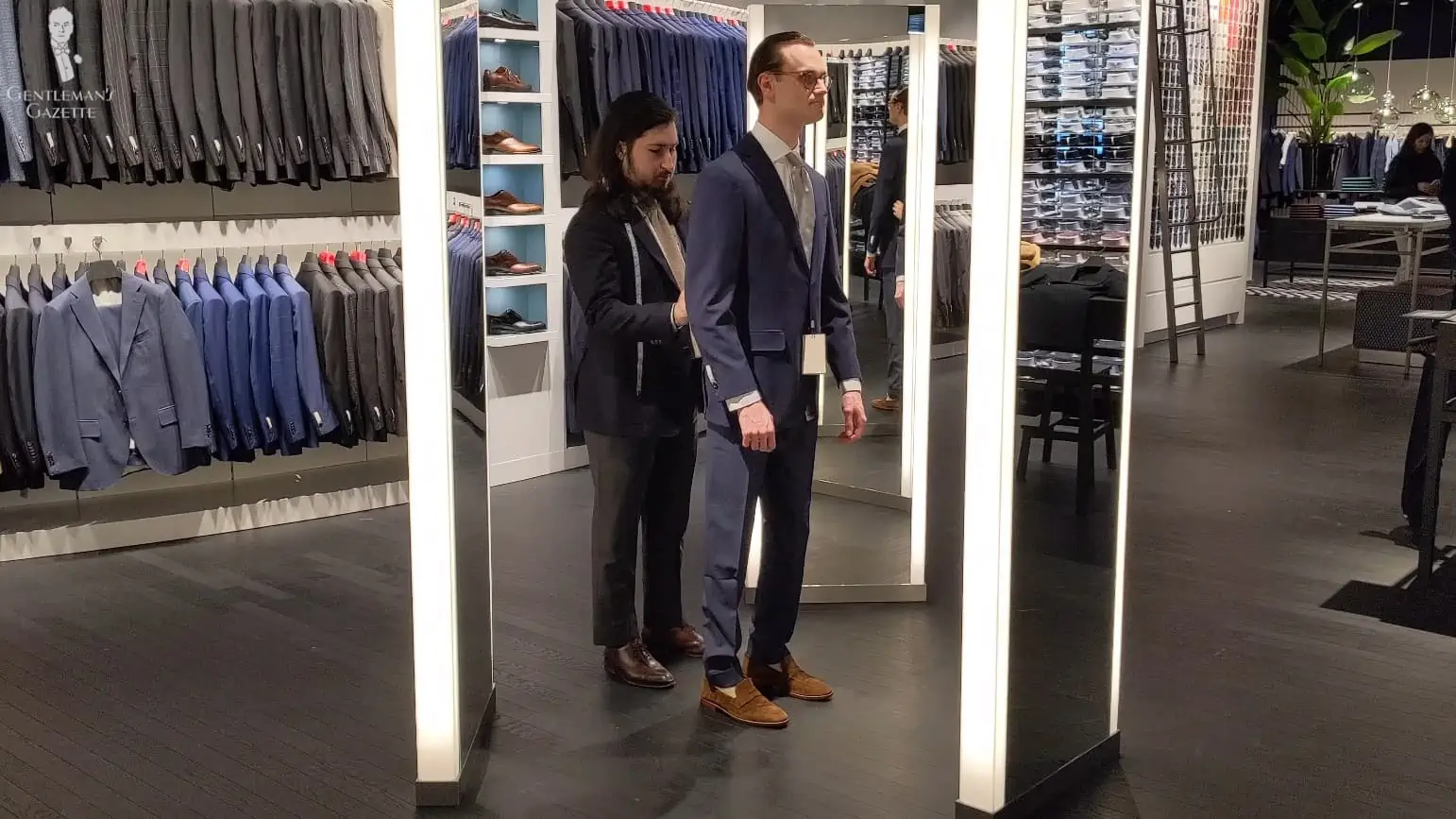
Beware the Allure of "Custom"
Sometimes, salespeople and marketing campaigns try to offer you “custom” suits for $200 – $500, but that is simply a made-to-measure suit. To fully understand the difference between Bespoke, Made-To-Measure, Ready-To-Wear, and so on, you can refer to our dedicated guides and videos. The fact of the matter is, you can usually do much better in terms of quality by looking for a secondhand or vintage suit.
To learn more about the new suit market and how limiting a low budget can be, you should understand the difference between a $100 vs. $1,000 Suit as well as a $500 vs. $5,000 Suit.
Learn what Bespoke, M2M, and RTW really mean!
Tip #4: Know What Your Alterations Tailor Can Do
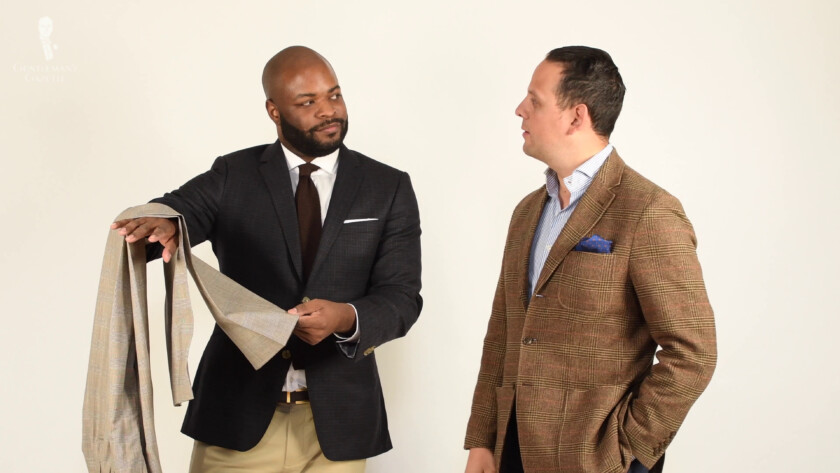
Regardless of your body type, start looking for a skilled alterations tailor and learn what elements can and cannot be tailored successfully. Take a look at the work they offer and how they accommodate individual requests for difficult tasks, such as shortening a sleeve from the sleeve head. If they can do that properly, so the sleeves hang nicely without bumps on the sleeve head or wrinkles in the sleeves, chances are they can do everything else you need them to do.
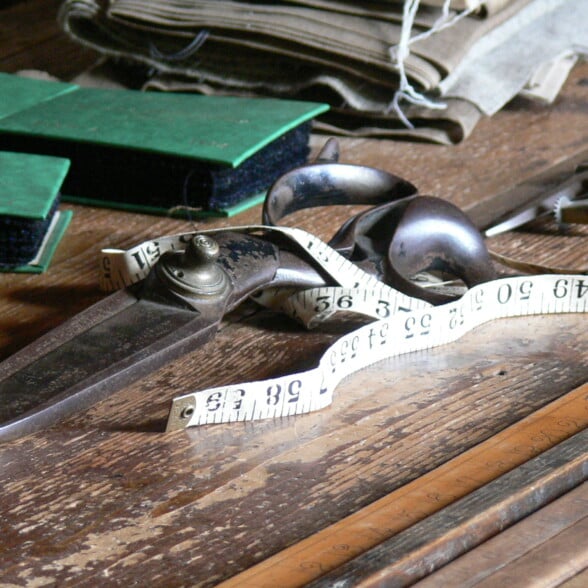
What your alterations tailor Can’t do
Even if you find the best alterations tailor, they are not magicians. As such, you cannot buy jackets that are too long or too short because even though there might be some fabric reserve, the buttonholes and the position of the pockets can’t be changed. Also, if the shoulders don’t fit, it is going to be difficult to fix them, just like the front-back balance. As a rule of thumb, do not buy anything that is more than one size to small or too large because alterations will be costly and the result is often not ideal. However, when in doubt, buy something that is slightly too loose rather than too tight, because removing fabric is easy but if there is not enough cloth reserve in the garment, it can’t be altered.
See exactly what an alterations tailor can and cannot do!
Tip #5: Go Vintage
Vintage Shopping Offers Exceptional Quality at Heavily Reduced Prices
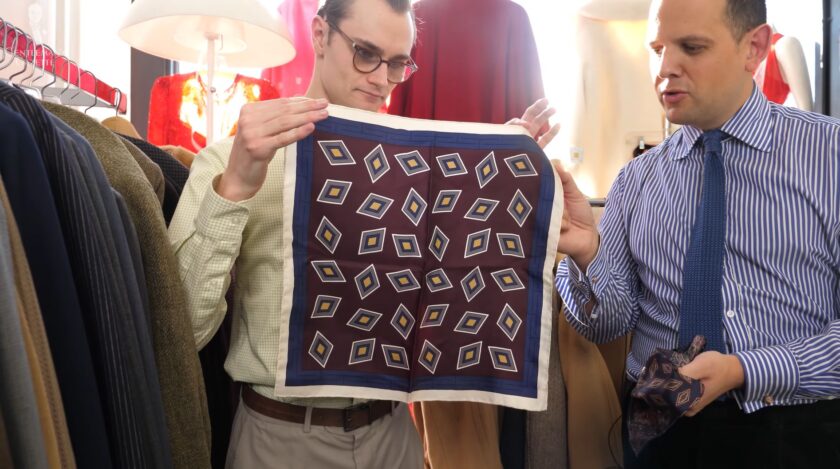
When Raphael began his Classic Menswear journey, his wardrobe was 90% vintage, secondhand, or new-old-stock. Raphael considers it a point of pride how well he managed to dress even though he rarely set foot in nice stores.
Our guide to vintage shopping
Vintage stores or flea markets in larger cities like London or Naples often provide quality clothing at a fraction of the retail price, but we’ve found vintage buys worth owning in just about every place we’ve traveled. Of course, it usually takes a bit of time to find something good, but if you do and the fit is acceptable, your alterations tailor can do the rest.
How To Identify Quality Vintage Menswear
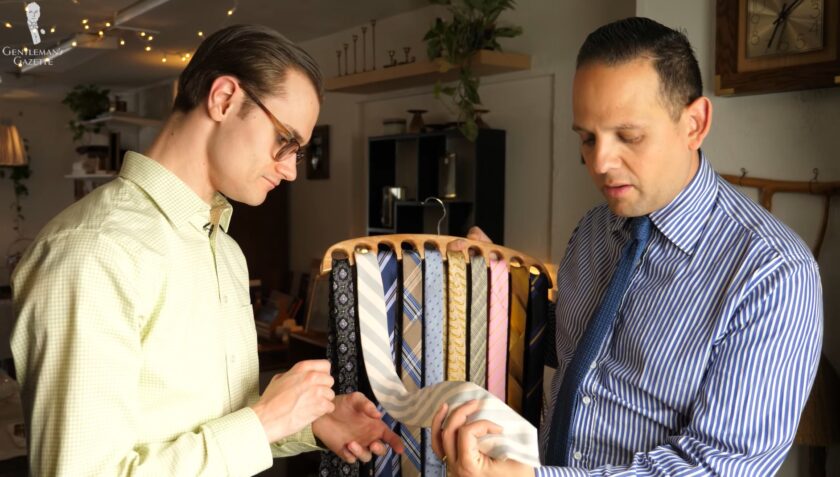
Vintage shopping requires patience, knowledge, and practice to do well. You need to know what you are looking for, what quality construction and materials feel like, and a solid understanding of brands and countries of origin. To be an effective vintage shopper, you should understand the following concepts:
- How to identify quality materials like cashmere, cotton, and wool
- Brand names and what they are known for, such as Ralph Lauren or Brooks Brothers for shirts and suits
- Countries of origin and what they are known for, such as Italian leather and tailoring
- Quality construction techniques, such as handmade buttonholes, hand-sewn sleeve lining, and hand-stitched collars
The more you know, the easier it will be to spot a quality product.
Quick Tips for Identifying Quality Vintage Jackets
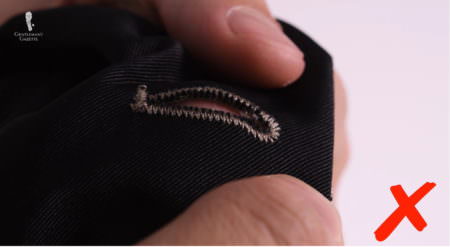
Check the buttonholes
If you find a jacket with handmade buttonholes, it is extremely likely that you have found a quality garment. It is usually easier to identify a handmade buttonhole from the back side because it will look irregular, whereas a machine-made buttonhole is consistent throughout.
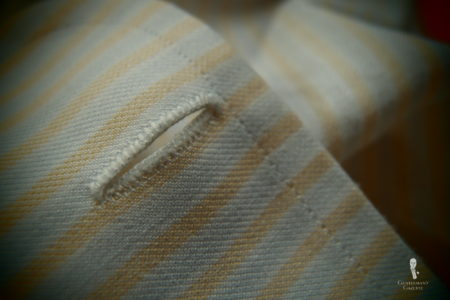
Favor cut-first buttonholes
As a rule of thumb, if button holes are cut first, then neatly sewn, chances are it is a higher quality garment than if the stitch density is low and you can see some fraying.
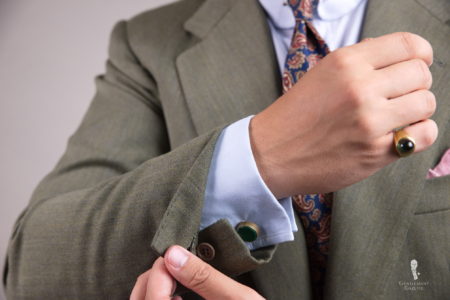
Surgeon's cuffs aren't what they used to be
Working cuff buttons, or surgeon’s cuffs, were once a hallmark of quality, but innovations in sewing have made this feature commonplace in even lower-quality jackets. Likewise, some jackets with non-functional buttonholes can be very high quality.
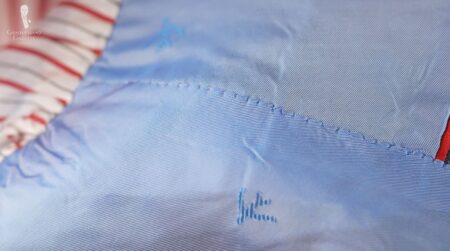
By-hand sleeve lining
Check the sleeve lining to see if it is sewn by hand. Highly regimented, perfect stitches are indicative of machine work, while handwork will appear irregular but still neat.
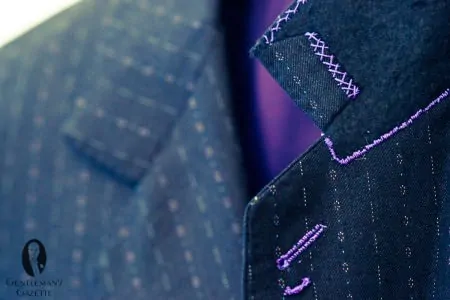
Hand-sewn collar
Similarly, you can flip up the collar and ascertain whether or not it was attached with hand stitching using the same hallmarks we mentioned for the sleeve lining.
Tip #6: Invest in Flexible, Versatile, Wardrobe-Extending Garments and Accessories
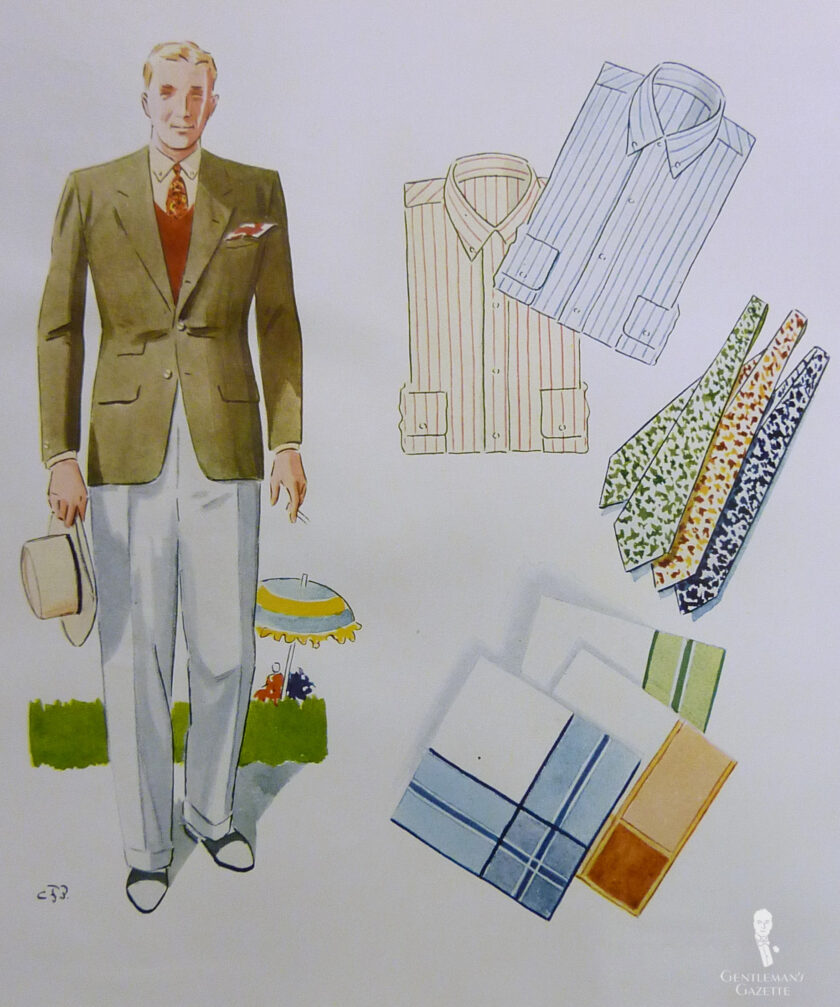
As you are building your Classic wardrobe, focus at first on acquiring items that can be worn on a variety of occasions or on accessories that can be paired with your ensembles to give them a different look or dress them up or down.
A bold pair of patterned pants may be a fun addition to your wardrobe, but their distinctiveness will not allow you to make many new outfits in the way a burgundy vest will.
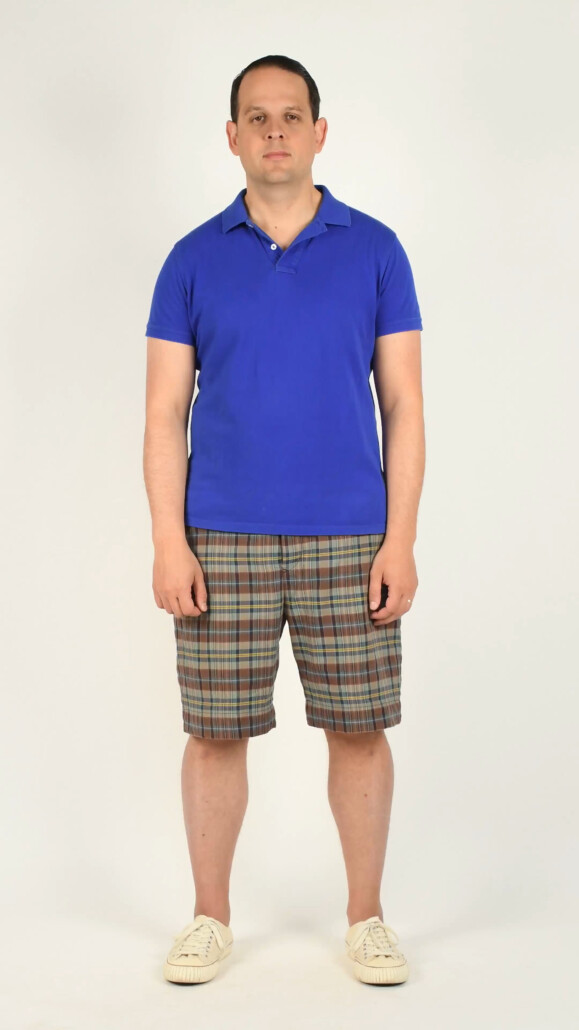
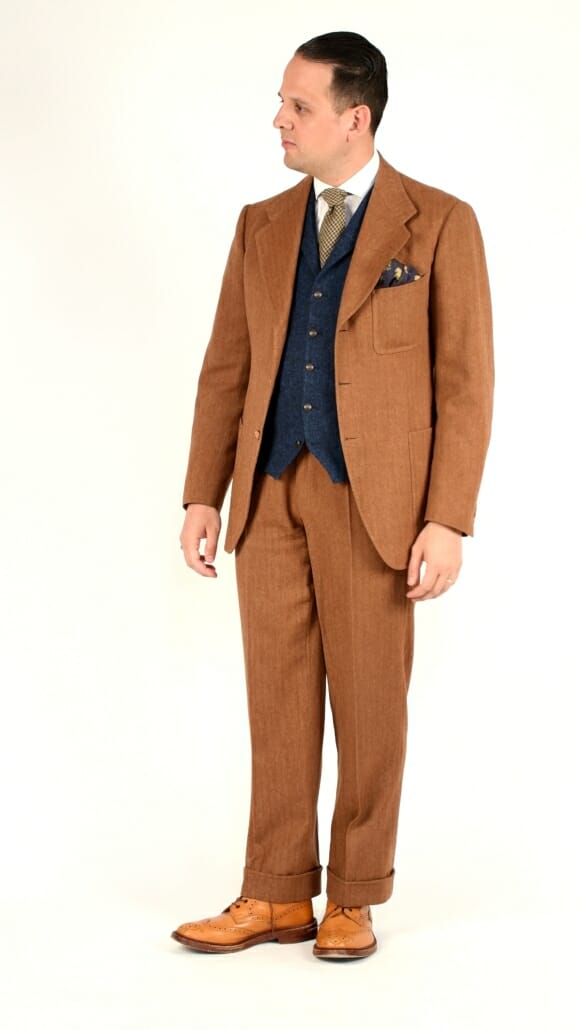
Contrasting vests are less expensive than a jacket or a suit, and they really help you to create many new outfits with your existing wardrobe. Take a look at our odd vest guide for more details.
See all of Preston’s favorite accessories!
Accessories are a very efficient means to make more expensive items like jackets or trousers go further. Different shoe laces can make an old pair of shoes seem new, a tie can completely change the formality of a jacket, and dress socks can alter the mood of your whole ensemble.
Fort Belvedere Accessories
The Key to Making Your Entire Wardrobe Go Further
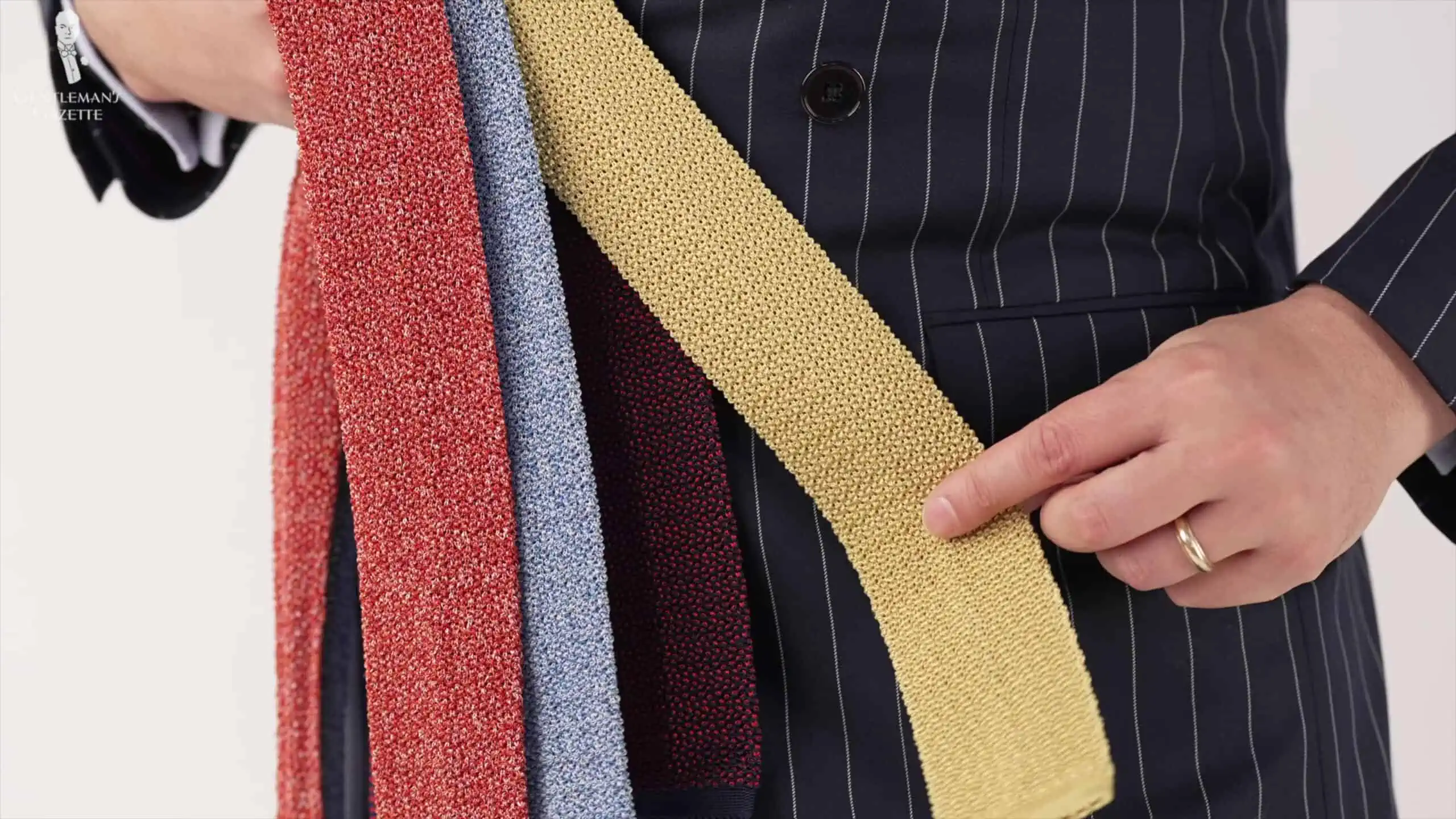
Transformative Ties!
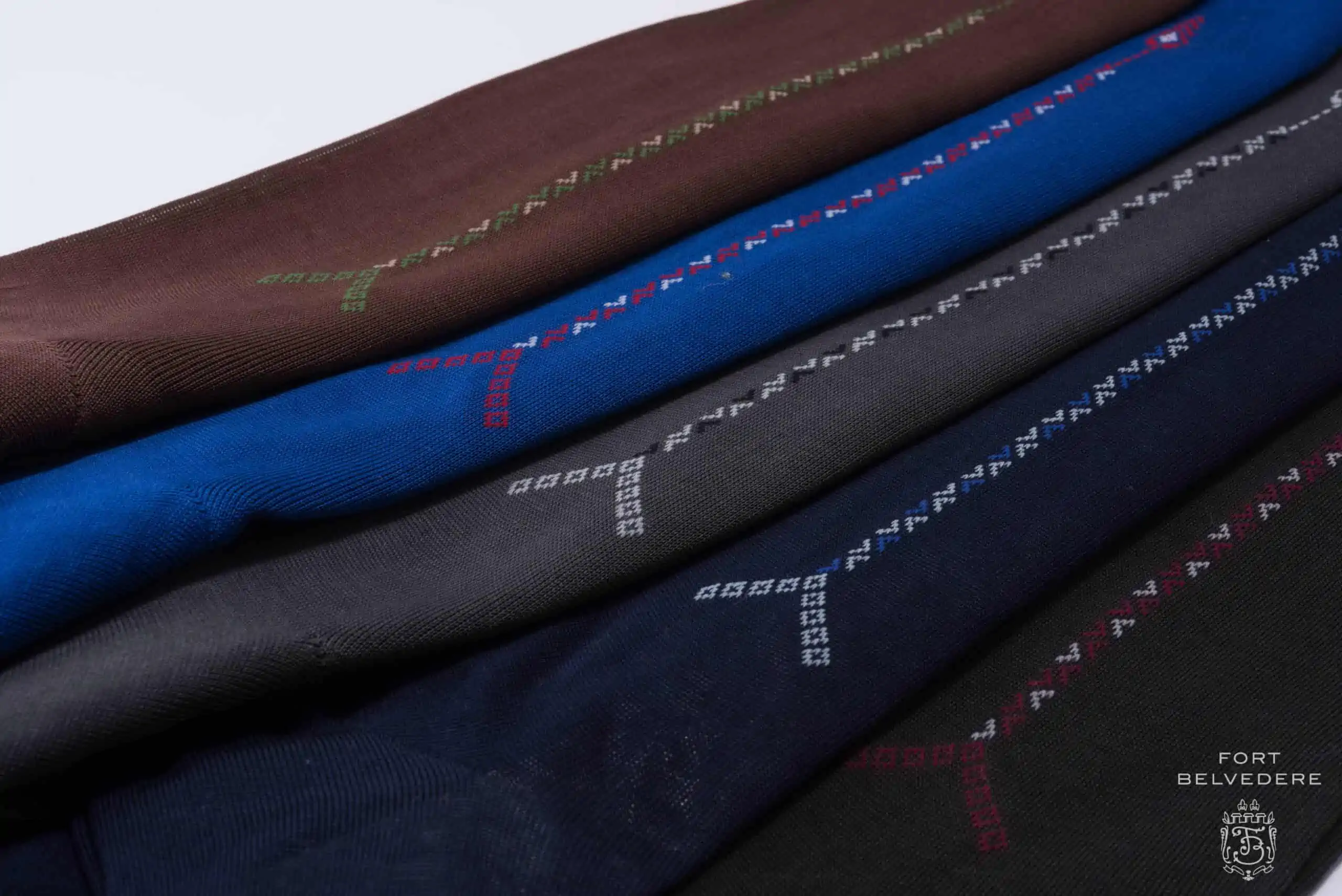
Adaptable Socks!
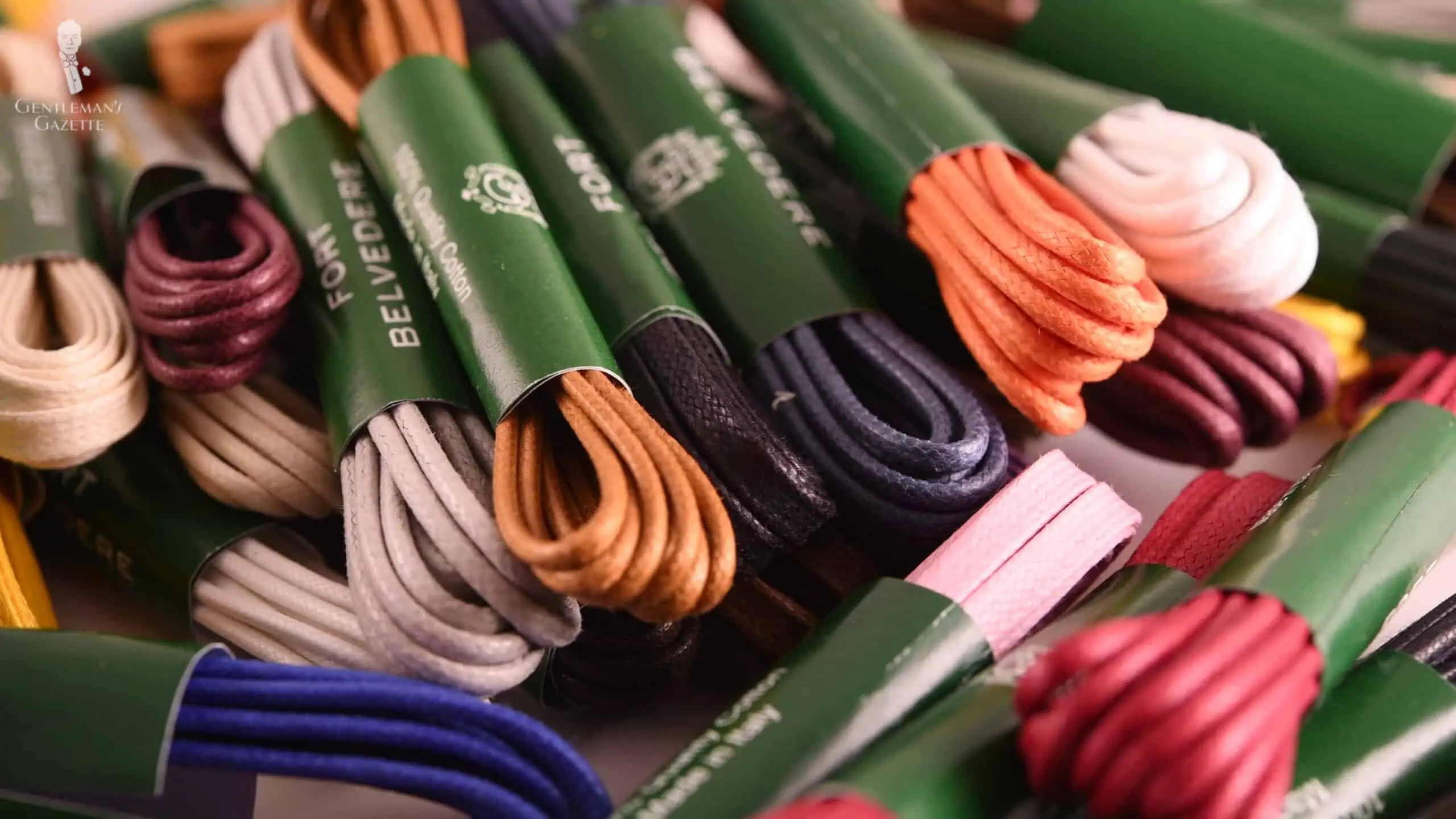
Reinvigorating Laces!
Tip #7: Take Care of Your Existing Wardrobe
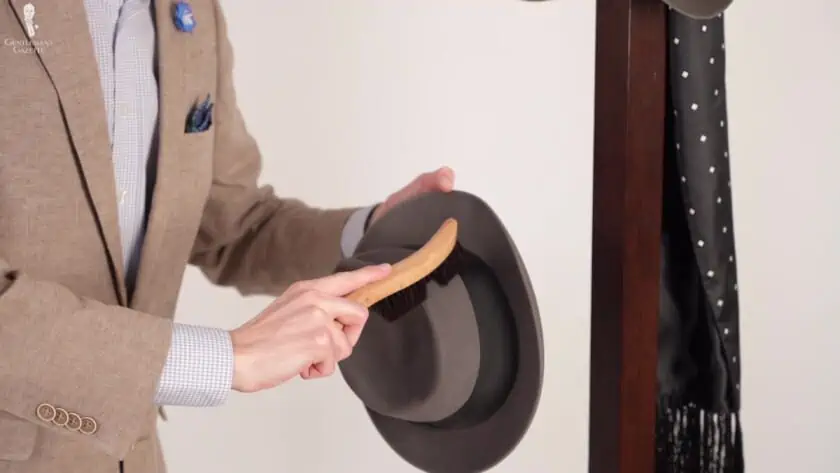
Proper care of the garments you already own will extend their life and will be less expensive in the long run, as you will need to replace items less frequently. However, caring for your clothes isn’t always straightforward.
- For suits, jackets, trousers, and overcoats, you should brush them regularly with a clothes brush.
- Dry clean your clothes only when absolutely necessary because the harsh chemicals and techniques used will drastically shorten the lifespan of your clothes.
- Believe it or not, you can wash many suit jackets at home! But just like with your sweaters, wash them carefully.
- If your garment is wrinkled, steam them either in a bathroom or with a steamer.
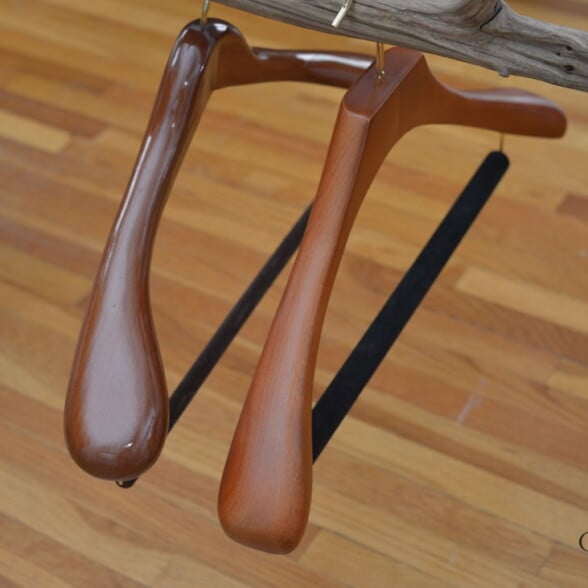
Make sure that you use
Formed Hangers
To preserve their shoulders and drape, you should always endeavor to hang coats and jackets on wide, curved hangers with built-out shoulders. If you cannot afford high-quality hangers, like the examples from Butler Luxury that we recommend, you can always use plastic ones instead. Many stores will even give them out for free.
Peruse our Clothes Maintenance Archives
Tip #8: Don’t Buy Cheap and Buy Twice
In Tip #2, we suggested that you know your needs and stick to buying from your list. However, if you want to end up with something worth owning, beware of buying cheap. Quality has its price, so don’t let a cheap find turn you into a sucker.
“It’s better to buy one good pair of shoes than four cheap ones”
Elias Leach, father of Cary Grant (Pictured)
Even a piece that is marked down by 90% may be a total waste of money if it is not going to last beyond a couple of years. Yes, it is nice to score a deal, but a smart budget shopper will also consider how quickly they will have to replace an important piece if they buy something cheap.
Tip #9: Don’t Fall Prey to Sales and Discounts
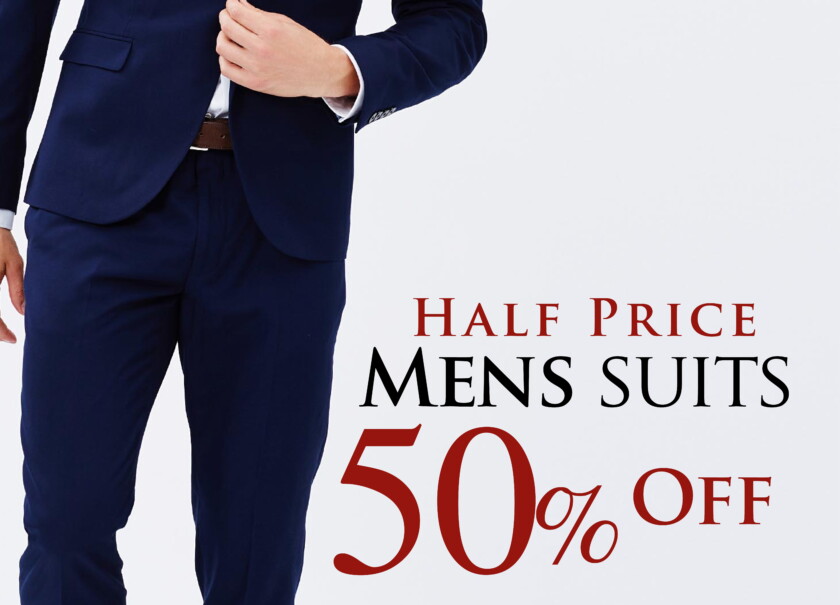
Buying something on sale might seem like an obvious solution to shopping on a budget, but the trouble is, very rarely are the things on sale that you really need.
If a deal is too good to be true, it probably is too good to be true. There is a reason why nobody has bought an item before you at a retail store if it is marked down heavily – it may be a second, there could be loose threads, tears, stains, or some other defect.
“Penny wise, pound foolish”
English expression
Only take items you know you can repair with certainty – buttons are easy to sew back on, but a stain is not worth the risk.
Instead, think about the cost per wear you will get out of the garment. A $50 seersucker jacket that you never wear can turn out to be more expensive than the $400 blazer you wear all the time in the long run. This also applies to cheap finds that need a lot of alterations – dry cleaning and extensive tailoring can easily multiply the real cost of ownership quickly. It may be worth buying something a full price if you’ll get exactly what you need.

Raphael and the case of the
Rare Jacket
Every now and then, we menswear enthusiasts get lucky! Once, a friend of Raphael’s found a secondhand jacket that was labeled as cashmere, with a price of €300. Raphael’s friend, however, recognized that the jacket was actually made of extremely valuable Vicuna! He snapped the jacket up, then turned around and resold it for €3000! Naturally, deals like this are rare, but it just goes to show how much you potentially stand to gain when you really know your stuff!
Tip #10: Don’t Compromise on Fit
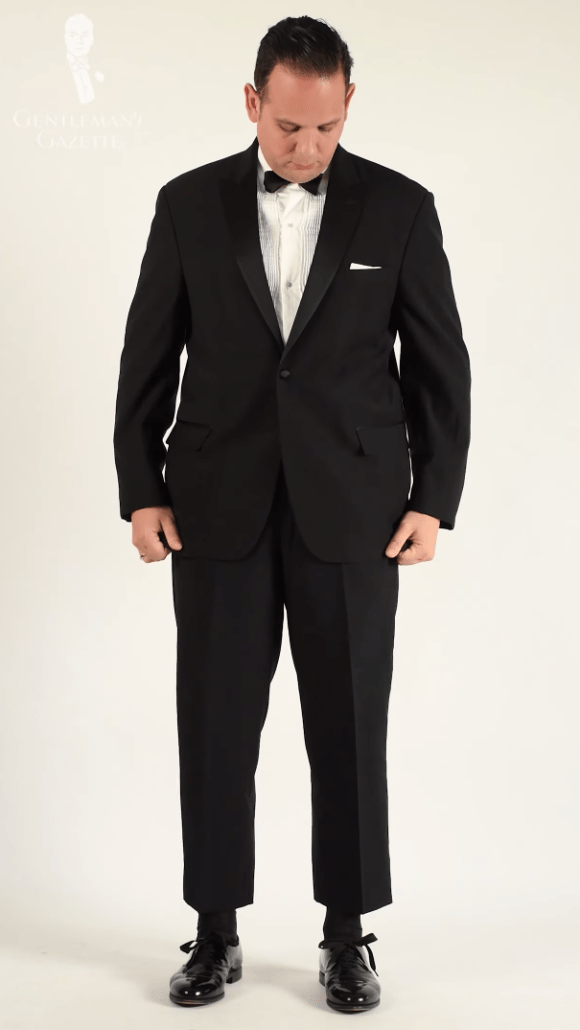
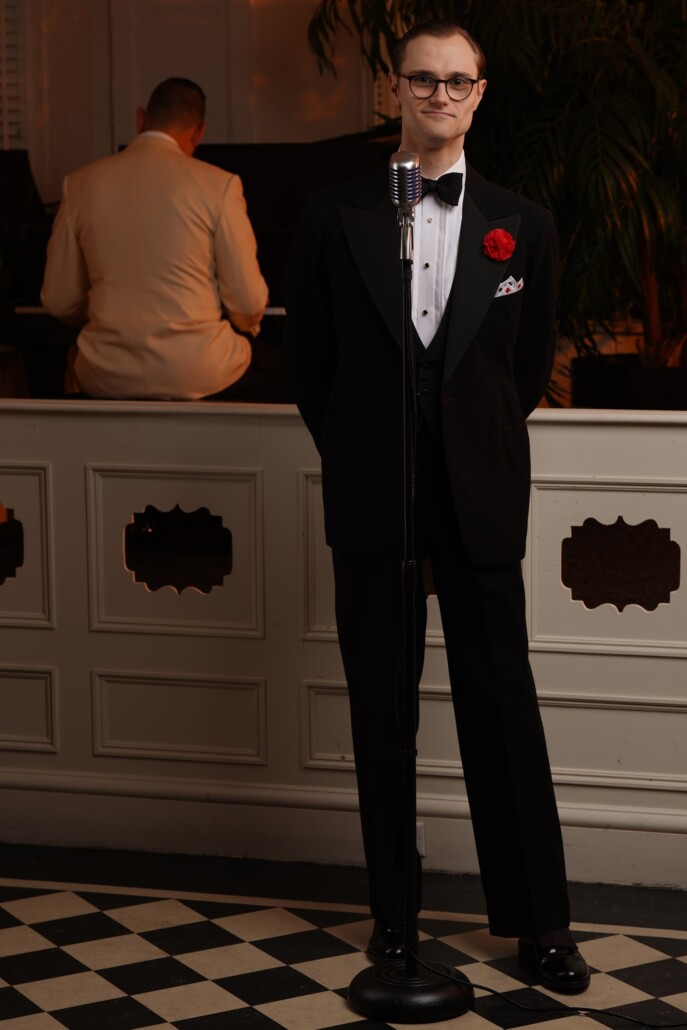
Here at the Gentleman’s Gazette, we are constantly emphasizing the importance of fit, and this applies to Budget Shopping as well. If something does not have a good fit, even if it is a good deal, do not buy it unless you know that alterations will resolve the issues.
For greater clarity, be sure to read our guides to pants fit and suit fit, but keep these general guidelines in mind:
- Generally, excessive wrinkles in a garment when you stand are a sign of a bad fit.
- Vertical creases or wrinkles indicate that the garment is too wide in certain parts.
- Horizontal x-folds indicate that something is too tight.

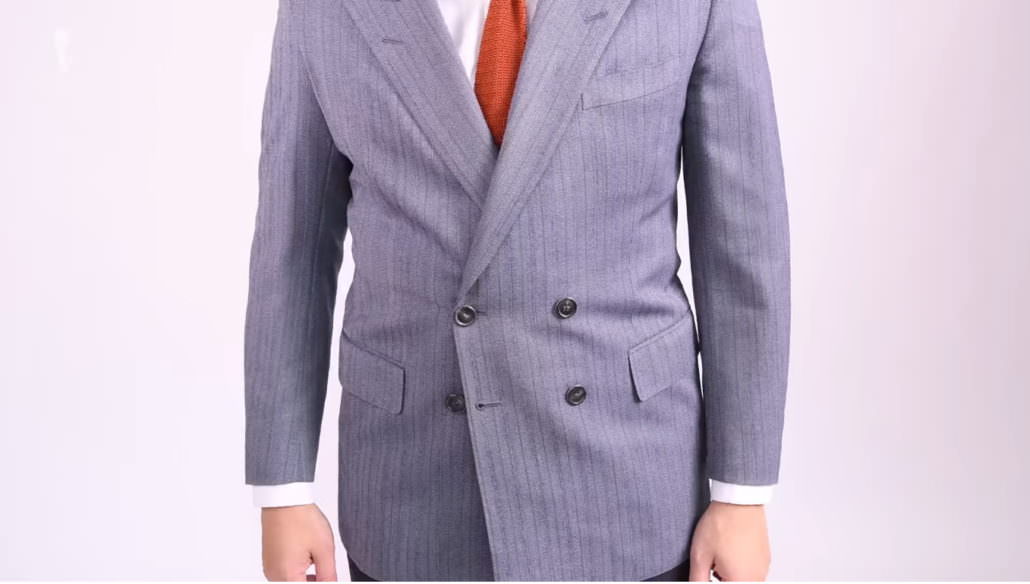
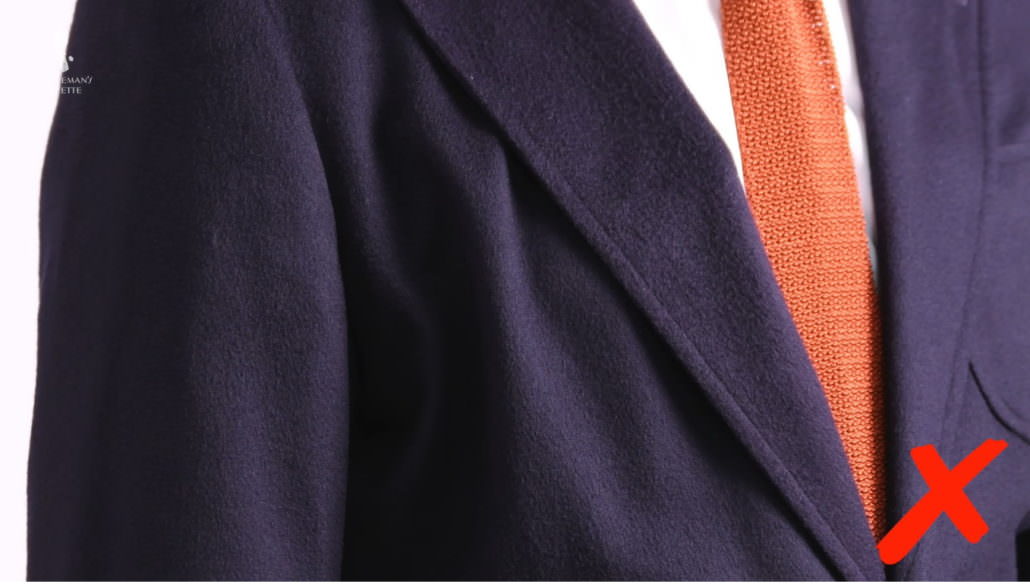
Learn our ten guidelines to perfect fit!
Tip #11: Don’t Rely Exclusively on Salespersons or Sellers
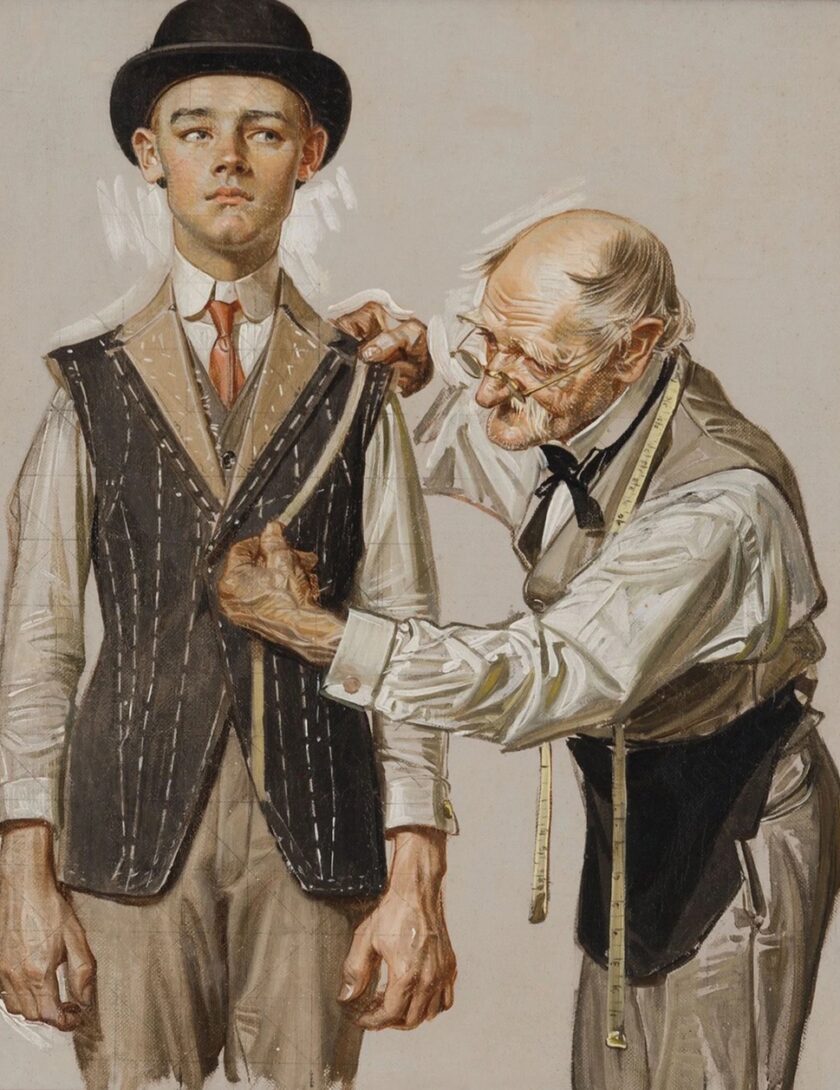
While it is always a good idea to listen to the opinions of others, do not assume that every salesperson is a menswear expert or that they necessarily have your best interests at heart.
In the past, haberdashery was a well-paying career in which salespeople were encouraged to genuinely help patrons find the right items for them, and the staff was well-trained in Classic Menswear conventions. Nowadays, however, most retailer workers are paid minimum wage and benefit from minimal training.
“Ideally, there should be at least one skilled dresser/salesman on the floor to inspire and direct men’s palettes. That sounds easy but to find such a fellow these days has never been more of a challenge. I mean, if you can’t employ someone who knows his way around a bow tie or a properly cut pleated bottom, why should you expect the customer to be able to appreciate those items that take a little initiative to pull off well.”
Alan Flusser
Unfortunately, most sales staff are incentivized to sell products under any circumstances. It is also rare to find a seller who is both fully educated about Classic Menswear and willing to teach customers about clothing.
Because salespersons have a conflict of interest and you cannot be sure that they have been sufficiently trained to provide sound counsel, go into stores with the intent of being your own best resource.
Tip #12: Do Your Research Before Budget Shopping
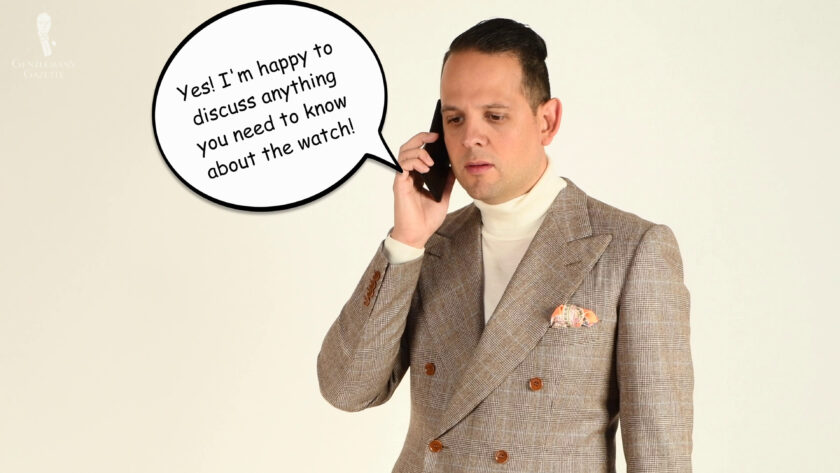
If you want to spend carefully, it pays to educate yourself and go shopping prepared with your own resources. We hope we can be of service here at the Gentleman’s Gazette; it has been our goal from our very first day to help men dress better and elevate their style by educating them. Our archive is chock full of guides to everything we’ve mentioned in this article. Here are 43 other online resources to consider.
Check out Raphael’s top 10 favorite fashion books and 100 Men’s Fashion Books for additional style resources.
Our archives are at your disposal!
Tip #13: Avoid Outlets When Budget Shopping

Originally, outlets were obscure shopping destinations that sold clothes stores couldn’t sell in their regular stores. They were filled with slightly flawed, unusual, or single-item garments that didn’t appeal to a mainstream audience, and they used discounts to move them off the shelves. Within the last 10 years, outlets have become more popular, and retailers understand that many people shop based on discounts.
As such, many brands have decided to play along and produce new items just for outlets. Of course, these are of lower quality with higher price tags so they can lure customers into a sale with 70% off signs. If you find something that is exactly what you want, that’s fine. Otherwise, stay away because you will often end up with stuff that you will quickly have to replace, and that doesn’t just harm the environment but also your wallet.
Tip #14: Stay in Touch with Trusted and Valued Retailers
Once you have found a store with good quality merchandise, ensure that you are added to their customer database and sign up for their newsletter so you can stay in touch. If you develop a relationship with the owner, they will often volunteer to inform you if something you’re looking for comes in the store in your size.
“Shouldn’t mind being introduced to my own tailor; he always votes on the right side. But object strongly to being sent down to dinner with my wife’s milliner.”
From An Ideal Husband by Oscar Wilde
Follow your favorite eBay stores and vintage shops on Instagram, where many will post new finds. This technique works best with small local stores, and it will give you an edge if you are a preferred, engaged customer. The store owner may even tip you off early about great new finds.
Tip #15: Stick to Your Budget
![Mens Leather Wallet In Burgundy Turquoise Deerskin With 10 Card Slots By Fort Belvedere 9392 Keep your budget in mind! [Pictured: Men's Leather Wallet in Burgundy & Turquoise Deerskin with 10 Card Slots by Fort Belvedere]](https://www.gentlemansgazette.com/wp-content/uploads/2016/02/Mens-Leather-Wallet-in-Burgundy-Turquoise-Deerskin-with-10-Card-Slots-by-Fort-Belvedere-9392-840x561.jpg)
Create a clothing budget by saving a set amount every month. Even if it is just $20 a month, that might easily result in a new tie or jacket from a vintage store. Save up and then buy a quality item when you can afford it.
An easy way to stick to your budget is to focus on spending the necessary money on quality big-ticket items, like suits, overcoats, and shoes, and then build up a large collection of accessories.
Raphael found it was easy to buy vintage clothes but retail accessories so that he could get exactly what he wanted to complete the look: he could afford a pair of nice socks, pocket square, or tie at full price long before he could afford a full suit at retail prices.
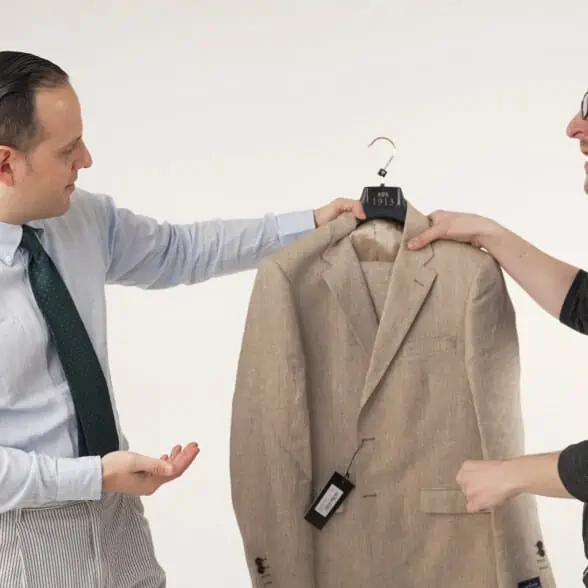
Don’t wear something?
Sell it!
Selling unused items is a great way to increase your budget. Consider a one-in-one-out approach so that your money is not tied up in clothing just sitting in your closet. Sell items you don’t wear on eBay or at a local vintage store. If you are new to reselling, working with a local consignment shop will usually be your best option.
Conclusion

Even if can’t afford the things you’d love to own at the moment or if you just don’t have access to nice clothes very easily, there is always a way to dress stylishly on a budget. We believe that the tips we have provided here should provide you with all the fundamentals you need so you can build your very own wardrobe on a budget.
We cannot wait to see what you put together!
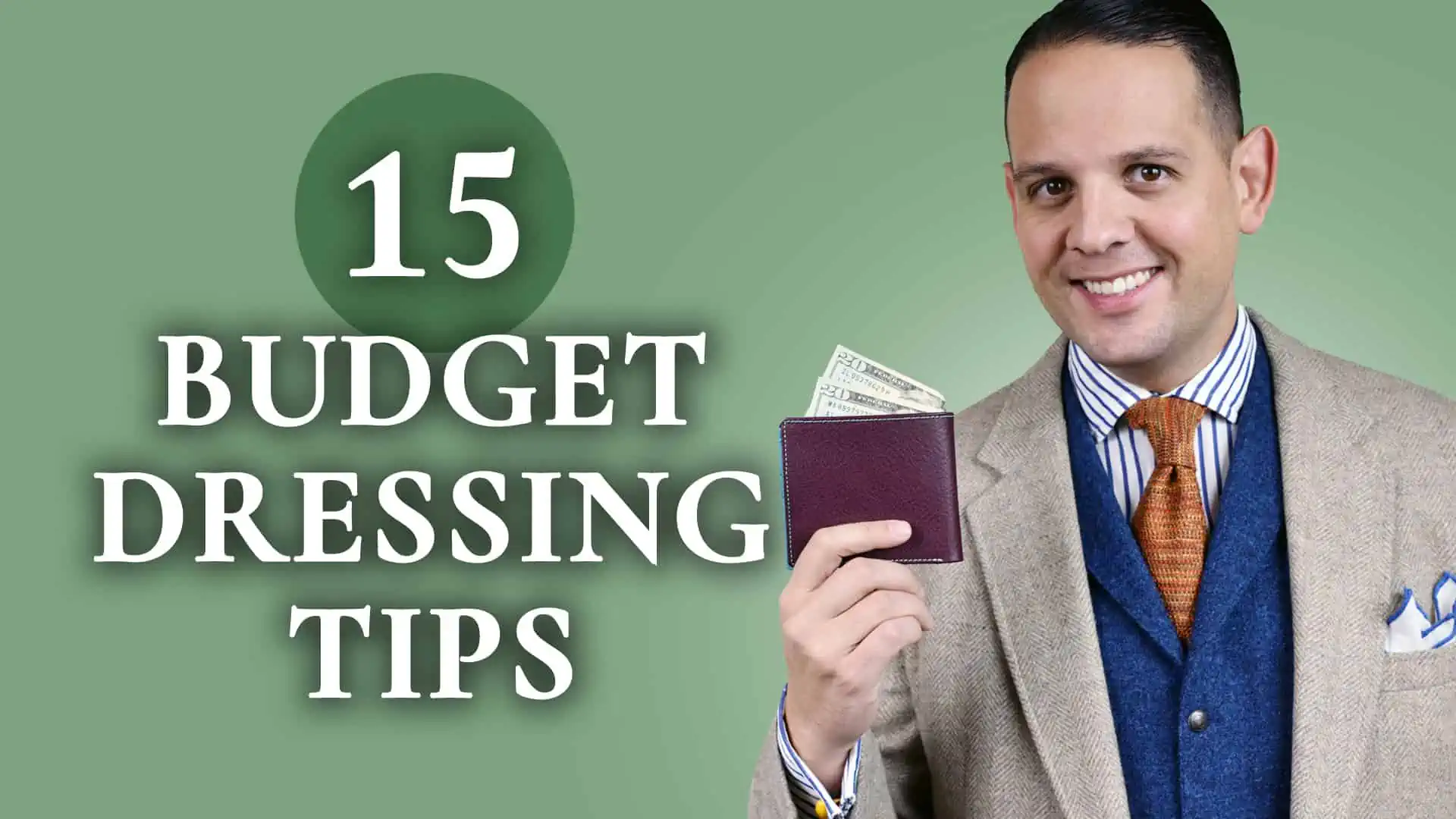






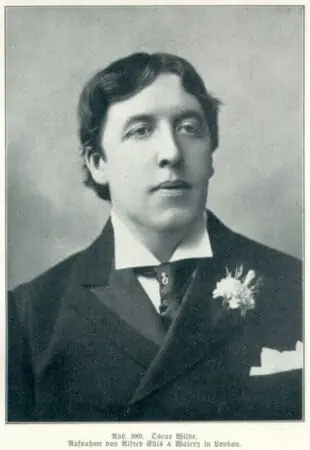
Sven,
Thank you for answering hat I found to be one of the most frustrating questions. While I have been doing much of it already you had some amazing new ideas, such as the 360 degree picture. Thanks again for keeping our budgets in mind, keep up the incredible work.
Best,
JA
One lesson I’ve learned more than once is if you are unsure on size go slightly bigger. A jacket a bit larger than normal will fit better with a waistcoat (that’s a vest to colonials ). If it’s too small it will always not feel comfortable or look right. When buying a coat always buy one bigger than you jacket size for a good fit.
Sven,
I read that you used to live in Hamburg. I am living there, but only for a year.
Would you have some “gentleman’s” suggestion for the student that I am (ex. vintage stores)?
Jonathan
Jonathan,
Definitely check out Rudolf Beaufays, also, there used to be two other second hand stores closeby. One on Brahms Platz not far from Klemann bespoke shoes, and the other one was called secondella.
For new stuff you might like Conrad Hasselbach.
Hi Jonathan,
I´m also living in Hamburg and if you want, you can contact me via email. Maybe I can be of any help.
Just need to check with Sven Raphael if it would be okay, to post my email adress on here.
Kind regards
Jens
Ironically this piece is “Priceless” :-).
Thank you
Well said!
Fantastic article Raphael. I have a feeling this will help many people over the years.
I hope so!
Ausgezeichnet! Love that picture of you–high dandy. You almost look like a “gentleman’s gentlemen” except for the fact that you look much more like the gentleman. Keep up the outstanding work–the most literate, the most informative site of its kind on the web.
Thank you for your praise Adam.
I’m not sure that handwork is an essential sign of quality. Perhaps 20 or 30 years ago, so yes for vintage items. However, machinery and garment manufacturing has come a long way since then and seams and button holes are often stronger and cleaner by machine. Collars attached by machine are much neater and stronger than a collar attached by hand. Some modern handwork is actually sloppy and not executed well at all.
Daneil,
I think you misunderstood me. I only say, chances are it is higher, not that it is. A well made machine garment is better than a poorly done handmade one. However, if you look at all clothes out there, the ones with the better quality are handmade. This is not a guide about quality of handmade vs. machine, this is just a helpful guide that is supposed to help even novices to quickly identify good garments in a room with 1,000 suits. You can take everyone of the hanger, try it on and test if the quality is actually good.
These are excellent guidelines, Raphael.
If you live in a major city there are resale-consignment shops and thrift stores.
I. Resale or Consignment Stores
A resale or consignment shop should not be confused with a thrift shop. A resale store is a private business which accepts consignments of either new (with or without tag) or gently used high quality clothing. Some retailers send their left-overs to resale shops. I know of two high quality retailers which send their unsold sale goods to Gentlemens Resale in New York City.
Resale shops are very discerning as to what they accept since they make no profit carrying second-tier or very used merchandise. One of my friends, a womens resaler, is very select as to what she will accept as to designer, current fashion, and condition. She carries a small, but choice inventory.
Generally, “hot” labels or designers carry a premium whereas a quality maker might not. E.g., anything from Kiton and Hermes have a good prirce. However, some of the classic makers do not carry a high tariff, such as Oxxford, Turnbull & Asser, and Hickey Freeman. In many instances you can find bespoke, handmade suits from Savile Row for $200 or so. That is because the average customer has never heard of Henry Poole, however, he has heard of Armani.
II. Thrift Stores
A thrift store typically is tied to a non-profit charity (e.g., a hospital or a private school), and it sells used goods. People donate their used clothes and household items to the thrift store in exchange for a tax deduction.
I would say that thrift stores’ merchandise is a lower quality than a resale shop. However, you can find a “find.” Again, some retailers give their unsold clothes to thrift stores. 15 years ago I bought a stock of Sulka ties which Sulka gave to the Irvington Thrift House.
It is interesting that thrift and resale stores are concentrated on the Upper East Side of New York which is a wealthy part of town. Many gals make a tour of shopping the resale and thrift stores on a weekend.
On the mens side there are few resale stores. The best one in New York is Gentlemens Resale. There is one in Chelsea on Seventh Avenue, and the name escapes me, but I found that it selection was aimed at fashion-forward and that its prices were too high.
Mark E. Seitelman
http://www.seitelman.com
Thanks for your thoughtful comment Mark.
More articles like this please.
Dear Mr. Schneider,
being on a budget and living in a non-metropolitan area myself, I couldn’t have asked for better advice than this article provides. Again you have lived up to your reputation.
Thanks a lot and best regards across the Atlantic.
Very good article and comprehensive in scope. Bravo. Here in Eastern Mass., we have good access to vintage clothing stores, many of them featuring Ivy League cast offs that can serve for many years if well cared for. A small luxury but most welcome.
David, can you name a few other than Bobby from Boston?
A very timely article. In my case, part of the attraction of higher-quality, initially more expensive clothes (and shoes) has always been that in the long run, good quality and timeless pieces will last much longer and will save you money, besides giving more satisfaction in the process. I would say one tends to make more informed and better-researched spending decisions when money must be husbanded carefully.
Good Poin!
Sven,
Thank you for this excellent article. You answered many of my long-standing questions. I am 6’6″ tall. Do you know of any good online sources for tall clothing? All the local vintage and used clothing shops are devoid of tall clothes.
Thanks
In you case, I would suggest to go made-to-measure because even on ebay it will be difficult to find something.
I also am 6’6″. I find no difficulty eg in getting good quality trousers and shirts on-line, but vintage clothes are very scarce in bigger sizes – I think people really were shorter in the past but have no theory to explain this, other than improved nutrition and fewer childhood diseases. Where suits are concerned, as Mr Schneider suggests, you will probably have to go bespoke or made to measure.
Great article. But for those who aren’t able to catch a flight to London or Naples (I reside in the Bay Area – Oakland/San Francisco) can you recommend some good vintage, thrift or consignment shops that would provide me with a distinct gentlemanly edge? Thanks.
GT
Sorry, I am not familiar with shops in the Bay Area, but I am certain with a time investment of 1 hour and a bit of online research you will get at least 5 addresses where you can start.
Sven that’s you in the above photo? I hope so as it’s always nice to put a face to the writer…Great advice here also. I don’t wear suits often but like to have the knowledge for when I do.Thanks for a great forum. Edwin…
Yes, it is me indeed. There are plenty photos of me up here. you just have to read all of the old articles…
Could you possible write an article that details the measurements one ought to have, the absolutely necessary ones, and the additionally useful ones that you perhaps find of special interest? You could also suggest a nice website that lists measurements to keep in mind when shopping, for men in particular.
Thank you Mr. Schneider .unfortunately the only thrift store in Silver Spring MD is to say the least atrocious. To find a quality product there would be like looking for a needle in a haystack. Would you suggest any online second hand stores?
Dear Mr. Schneider:
I enjoyed your article very much. As with all of your articles, they make for pleasant, and very interesting reading. Thank you,
John Spittle.
Merci.
Thank you for this article.
It’s exactly aimed on my case – as a goverment clerk, my wage is about 60% of average pay in my country, and about 50% of average wage in capital city, where I live…
So, after paying rent of 500 USD/month, and buying some food, I’m left with less than about 50-100 USD/month for electronic toys and clothes…
On the other hand, It’s OK go to work in T-shirt and jeans and suit/jacket (even if worn in more casual way – no tie/bowtie) is to some degree considered as excentrism itself (overdress), so I can experiment and combine quite wildly.
Due to that, I know pretty well all secondhands in a nearby parts of city (last time I have bought nice long suede leather jacket in perfect condition for just 10$), monitor sales on HM (having several nice linen or cotton jackets for $35 from there) and also I buy a lot of things from small crafters on our national variant of Etsy (named http://www.Fler.cz), which are frequently cheaper than off the rack things and are usualy made-on-measure or made-on-demand. Also, there is a small traditional (since 1799) producer of hats named Tonak, which have it’s own shop in which offers hats in wide range types and prices and time to time, also some discounts…
The most expensive thing in my wardrobe is actually a shirt – I managed to save up some money and bought 1 shirt from TmLewin (80$) in black color, in hope, that it’ll last longer than other black shirts, that I used to have and that ended being grey pretty soon. (I tend to combine black shirt with sweaters in bright colors and vice versa) So far, so good.
Interesting comment. I thought TM Lewin are much less expensive. Also, I never wear black shirts myself but if they work for you, why not.
Well, probably there is some premium based on Czechia being rather tiny market, and also for buying it in store (which was necessity, as I was completely unaware about which size I have).
But even on-line, there is a price tag 55 €
As now I have no access to PC with possibility to hide my IP, I cannot access UK web to check prices there.
I still hope, I’ll find some photos from Prague Gothic Treffen, where I have worn it with white jacket, white-silver bowtie, brownish pocket square and silver venetian-mask lapel pin… But for now, I found only few photos in very poor quality.
I’m trying to arrange some private photosession for a almost year, but since I don’t have time even for my interests…
As always a article to read.
Finding vintage clothing can be hard for big sizes. But fortunately cuff links are on size fits all.
Whether someone is on a budget or not, you’ll always want to have staple items in your wardrobe before getting into fancier items. A solid navy suit, black shoes, etc.
When it comes to tailoring items that you found at a good deal make sure you’re working with a tailor you know, and knows how to do what you want.
One item I would have anyone of any budget save up for is well made shoes and to buy them over time when you can afford it.
A $400 suit with the right tailoring can look like a $4,000, but good shoes speak for themselves. :)
Do your homework and buy the best quality you can afford. :)
Meant to say a great article to read. :)
Raphael, thank you for these tips to starting a wardrobe. It is something for which I need to make time so that I don’t fall prey to the discount mentality.
Does anybody know a store like “Rudolf Beaufays” in Vienna? I live there for 2 years to attend University.
Thanks for help!
I discovered odd vests a couple years ago and now enjoy searching for vintage ties to go with them. In my circle of friends dress jeans, white shirt, vest and tie tend to stand out. I enjoy your visiting your site.
Dear Sven,
Thank you so much for this post. I just started reading your articles just a while ago. I don’t know if this was a god send but I have to applaud to what you’re doing. Having the time to do what you do and write these articles (in such great detail) never seizes to amaze me. Before I found this article I thought I was kind of alone in an ever changing world imposed by fashion and what the media dictates to what we should wear and what is in and out. I always felt a sense of wrong about it. I always thought and believed that I can’t be the only one from my generation who thinks this way, who admires and values the old fashioned and great traditions and history that our great and grand fathers have put on this world. I know I’m just 24 years old, but as I’m becoming a classic (found it a nicer way then saying older) I noticed that my ties with the past are getting stronger and stronger. I’m becoming more old fashioned with my behavior and the way I dress that the chaps at my university think and say most of the time that I belong in a different century. Maybe I do. But for now, all I’m trying to say is that I admire your work for the soul purpose of bringing back something that I felt was getting lost forever. And by that I mean style, class, good mannerism and a sense of respect for the old, all qualities that in my opinion defines a good man. I’m also a student on a budget and at the moment due to my size, I can’t find anything that fits me. Most of stores I go to never have my size or in some cases my size doesn’t exist with them. Which in some ways made me feel a little discriminated and made me hate shopping to where I just buy my things in one store or I just by three suits a year and just mix and match with new affordable shirts and ties which are made from good quality goods. In conclusion, I thank you for putting up this article and letting me know and believe that there are many alternatives to look good and still not kill your wallet and have something left to buy your lady some flowers and not feel like you have nothing left in the end of the month. In all, keep up the good work and keep up the beautiful work you are doing.
Buona fortuna amico,
Barone Luis Flores di Loritello
Have you complied a list that every wardrobe should have?
Wonderful article! Would anyone know a good tailor in Edinburgh, UK? The main problem I have is that my body has changed a bit. I gained a few stones and then I lost them. I have garments I love which are a bit too big or too tight. I simply do not know a good tailor I can trust. They are harder and harder to find. Kind regards.
Another great article.
I would add that people shouldn’t get too hung up on getting the absolutely best quality items.
If you don’t have a navy blazer and you want one you can settle for a medium quality off the rack blazer if nothing else is available. As long as it looks nice and does the job it doesn’t have to be the best blazer ever made.
Also, when thrifting expect to have 10 or 20 or 30 visits to the shop before you find something nice in your size and price range. You usually go home empty handed. But when you score, you are really happy!
Yet another great article.
Regarding #11, “Don’t trust a Salesperson or a Seller”
As someone who sold men’s clothing for a major department store in the South (I’ll give the reader a hint. The store was then under Federated Department Stores umbrella), the experience was a real eye-opener.
When I arrived for my first day of work, I noticed a department full of double-breasted suits. Immediately I questioned the sanity of the buyers and their inventory.
Firstly, it’s HOT where I live, especially in the Summer months, but generally year round. To give one an idea of how hot, I was not required to wear a jacket inside the store.
Secondly, the city is filled with all types of people from yahoos to world-class snobs. Regardless of one’s station in life, most men in the city do not wear suits unless they must, and dressing for work is mandatory only for a small percentage of the population. In other words, most men (1) Think it too hot to wear suits, and would not wear them any way. (2) Do not exhibit any sense of style, and could care less about dressing for sartorial spender, and (3) Those wearing suits do so because their position requires it.
Jeans, shorts, T-shirts and flip-flops are prolific ’round here. In addition, a large majority of men in this area have beer-guts or colloquially,”tool-sheds”.
So,considering all of the above, the store wants me to sell double-breasted suits. Good luck with that.
Eventually, after voicing my concern, loudly and frequently, management and purchasing , and I must give them credit, listened. Out went the majority of double-breasted suits and in came the two, and three-button models.
Our price points were, (the store is now out of business) (approximately, for all items) $300.00 to $750.00 for a suit, up to $95.00 for dress trousers, and dress shirts at $65.00. Keep in mind these are 1980’s dollars. Alterations free for suits, jackets, and trousers, with purchase.
The real eye-opener was my customer base. For various reasons, at least 80% of my customers were women, or, if a husband, boyfriend, male relative, male friend walked into the department, “Men’s Fine Furnishings”, he was accompanied by a female.
The take here is, most men do not know how to dress, and the men who know how to dress don’t ask questions. (Hence the need for knowledgeable, and informative websites such as Gentleman’s Gazette. Seriously).
As a result, my customers rarely asked questions, nor did the majority of them give-a-hoot about my opinion, except when it came to alterations and fit.(Part of my job consisted of chalking suit, jacket, and trousers, with the customer’s measurements, for alterations. Just don’t ask me about the “how and why” of tailoring, as I know nothing about the art.)
Rarely did any of the department’s sales people have occasion to voice their opinions, or expertise, and the department was not on commission. What we were required to push was the store’s credit card. Once one acquired the knack for selling the credit card, a “10% off total sales initial purchase” (which, in our department could amount to a considerable savings), it’s sales generated enough income to pay for the day’s lunch.
Oh how I long for those years.
NICE!
”latest posts” but its a rehash years old. same with other articles, may I know why
As time goes on, we make an effort to ensure that our content is always up to our current (and ever more exacting) standards. As such, we’ll periodically update our articles to incorporate new information–and sometimes, we think those updates deserve a spotlight! Thanks for reading.
thank you for your response. May I kindly suggest, hence, with due respect, to update the article without modifying the date. It is not a new article per se.
I am a regular reader of gentlemansgazette for many years and a content creator myself, so I see the great effort you put into writing, may I take this opportunity to thank you for an otherwise fantastic job.
We appreciate your feedback, Mike. All the best!
I enjoyed reading reading your article as I always do. I have never been keen to use charity shops as we call them in the U.K. to buy clothes but can see the advantages, it’s better to get a secondhand good quality item of clothing than a cheap ill fitting thing from a chain store. I find in the U.K. there a shops selling high priced designer items that are low quality with poor structure, materials and manufacturing. I suspect this is the same in many other places too.
I often wear a waistcoat (vest) they can be quite distinctive and versatile. Even though my wife has tried to persuade me to buy a burgundy one as you suggest they are far too Pickwickian for me. A simple colour or tweed works better for me.
On dry cleaning I couldn’t agree more, every time you have your suit dry cleaned it looks worse than last time. Instead I have taken to wash my lower cost ( less risk if it goes wrong) dry clean items on hand wash in a good quality washing machine without spin drying or fabric conditioner and then hang them outside on a hanger to dry. I haven’t had a failure yet.
A wonderful post full of excellent guidelines and resources. I begin to think I need a stroller suit, I only hope it does for me what it does for you. Thanks Sven.
99% of my wardrobe is thrifted. Suits and sport coats plus dress shirts, tie, pants and shoes, etc. Only very good to excellent quality. Fortunately, I live in a city that is into total casual attire, therefore there is little to no competition for dress up items. Example, last Saturday at 1/2 price Goodwill Saturday scored a new condition H-Freeman pick stitched lapel sport coat for $2.49. Also, 2 Brooks Brothers cotton dress shirts as new for $3.49 each and a Perry Ellis Portofino with French cuffs. Earlier, scored to W W Chan bespoken suits for $9.99 each that only needed the sleeves shorten. Top quality ties run $1.50 to $3 have included Brioni, Ted Baker, Robert Tallbot plus all the other top brands. Even have Pierre Balmain stuff. This is not a post about bragging but illustrates that with not much effort or cash one can build a huge high quality wardrobe if one thrifts on a regular basis. Oh, just score another pair of Allen Edmonds Fairfax shoes in oxblood unworn for $25 through Facebook Marketplace to go with a saddle tan pair thrifted recently. It’s a lot of fun building a wardrobe this way. Been doing it for 30 years spending less than 5 cents to the dollar.
Thank you for sharing!
Thanks for sharing this article the information presented is pretty much timeless advice. I discovered Gentlemen’s Gazette a couple of years ago when I moved from a more hands on position with the same company where I wore nothing but surgical scrubs every day to an office position where I needed to wear “real clothes” daily, of which I had almost none that were suited for the office. Most of my working life has been scrubs or some type of uniform and now in my 50’s in an office job I have discovered I like “dressing better”. This article is very applicable to me as I get most of my clothes from various on line sources, or an occasional find at a local re-sale or thrift shop but due to size and proportions these are very rare finds and so it is a slow process for someone not know as a patient person. Being only into this journey a couple of years I am still learning a lot and your articles and videos are very helpful.
Thanks for your comment, Mark. :)
Thank you for you4 great tips and insights especially on a budget!
One tip you gave- I have to differ- Outlets.
Especially in the New York( Woodbury Commons) and Palm Springs ( Cabazon) & Sawgrass ( Fort Lauderdale)
I am an avid deal shopper – my size is large ( 48 long- size 13 shoes etc)
I purchased 3 Charvet ties all w/ out flaws for 38.99 each ( Bergdorf original tags on) at Neiman Marcus Last Call,
3 pairs of TODS shoes at $159- from their retail stores – again no flaws.
5 dress shirts from the Thomas Pink dress shirts $49- $59. W/ no odd flaws etc
I agree there are some stores that make only for the outlets, but some come from
The original retail stores.
But the art of the deal is fun in establishing ones classic wardrobe!
Again thank you for all your knowledge.
Btw the Store Fine & Dandy in Hell’s Kitchen is a true find of retro ultra classic accessories.
Sims- Beverly Hills , Ca.
To the Gentleman’s Gazette Team,
Thank you all for your comprehensive, historical and informative videos and articles, even as a junior in high school this has sparked an interest in me for the sartorial world, thank you. The world becomes much smaller knowing this company is run in my home state of Minnesota. Previously I thought Minnesota was tough to find well dressed men before I stumbled into my first menswear store, Heimie’s Haberdashery, but much of the time my budget is not in this range. On the topic of budget shopping what recommendations do you have for thrift and vintage stores?
With Gratitude,
Adam Groh
Your advice to find a skilled alterations tailor can properly handle requests and difficult tasks would be important. When choosing one, it might be a good idea to talk to friends and family members to get their recommendations. You could also read online reviews to learn about their alteration services and experiences in order to determine which one can provide the tailoring services you need to have your clothes fit you perfectly.
Nice Article Thanks For Sharing